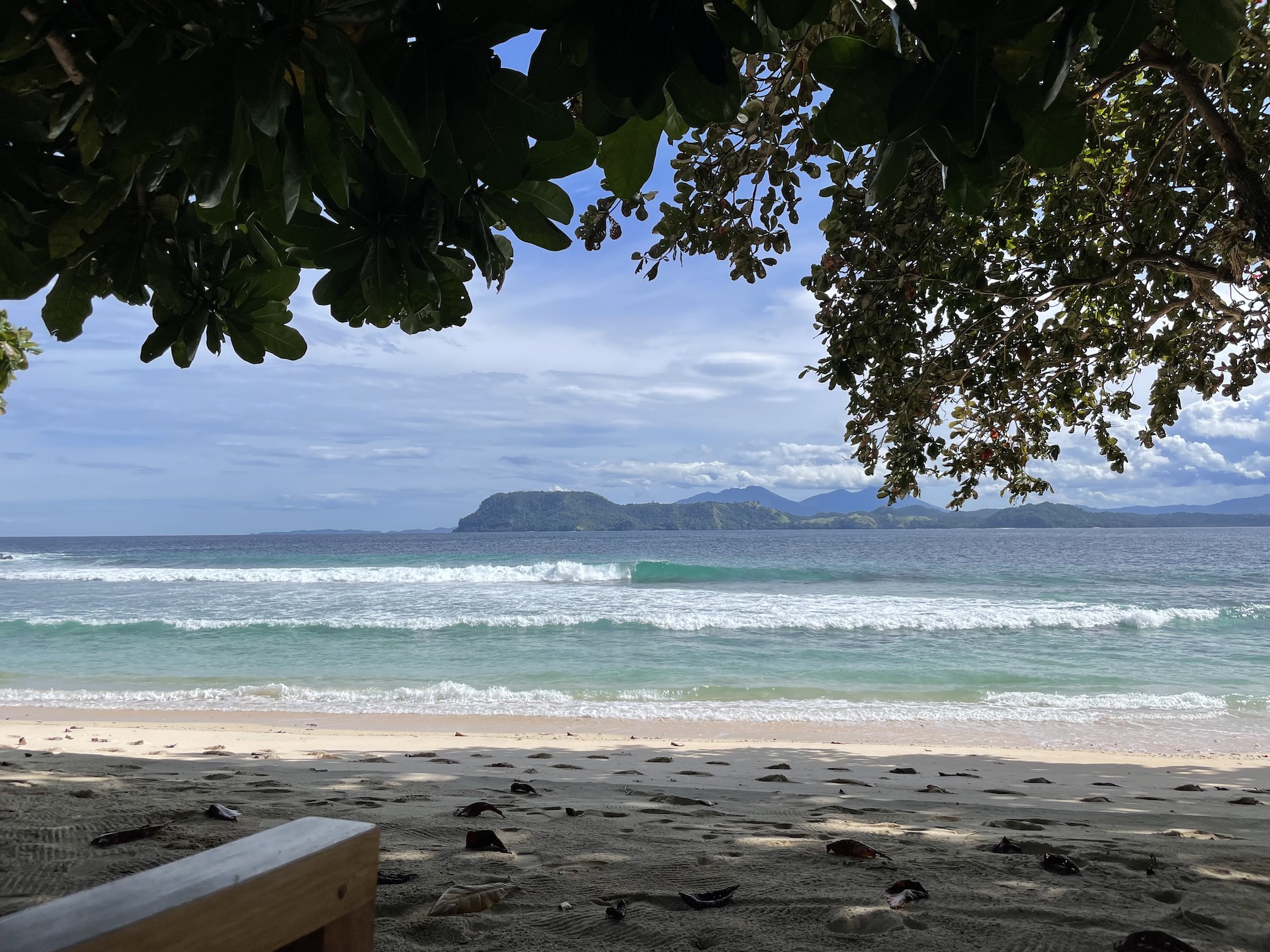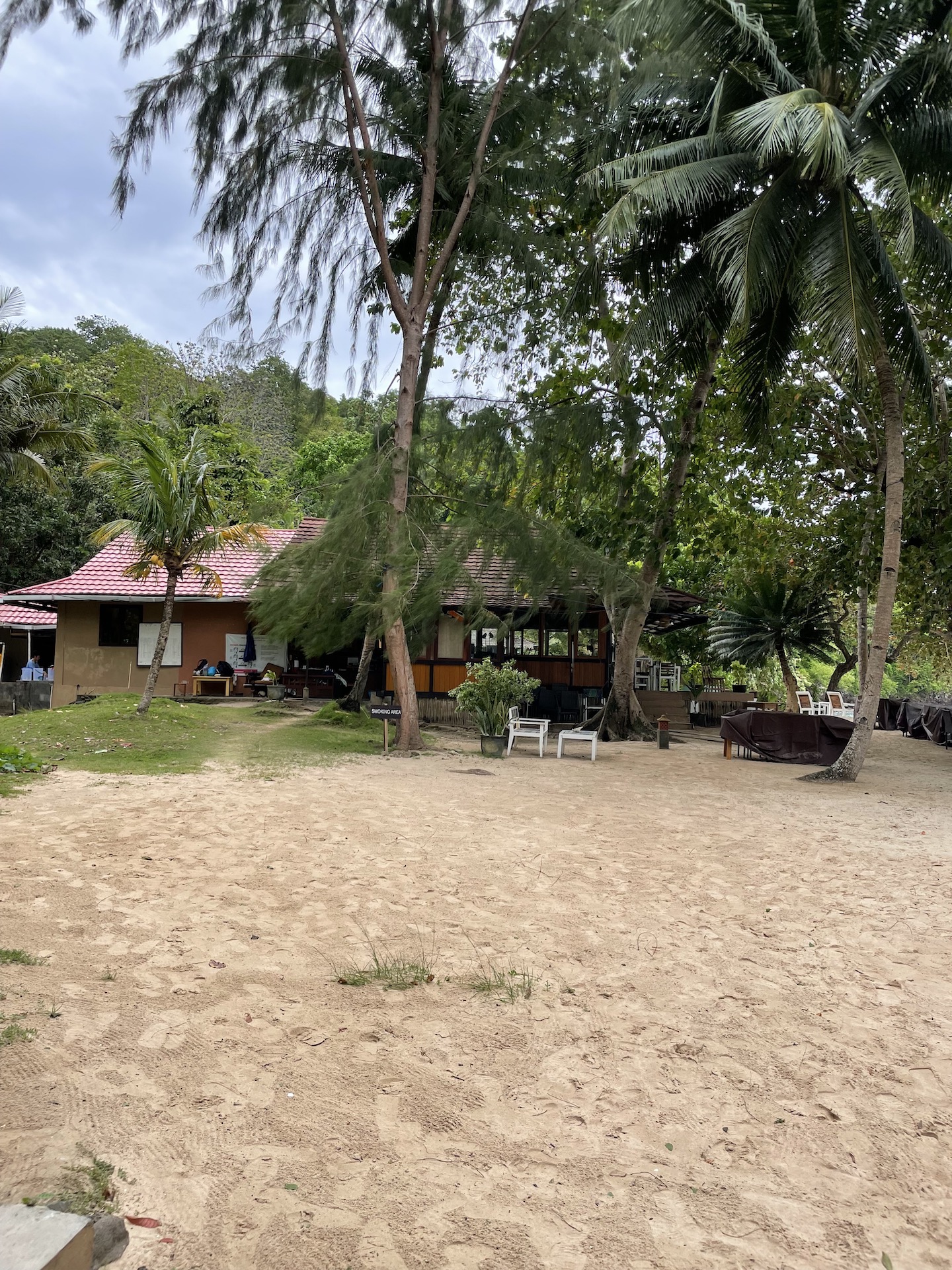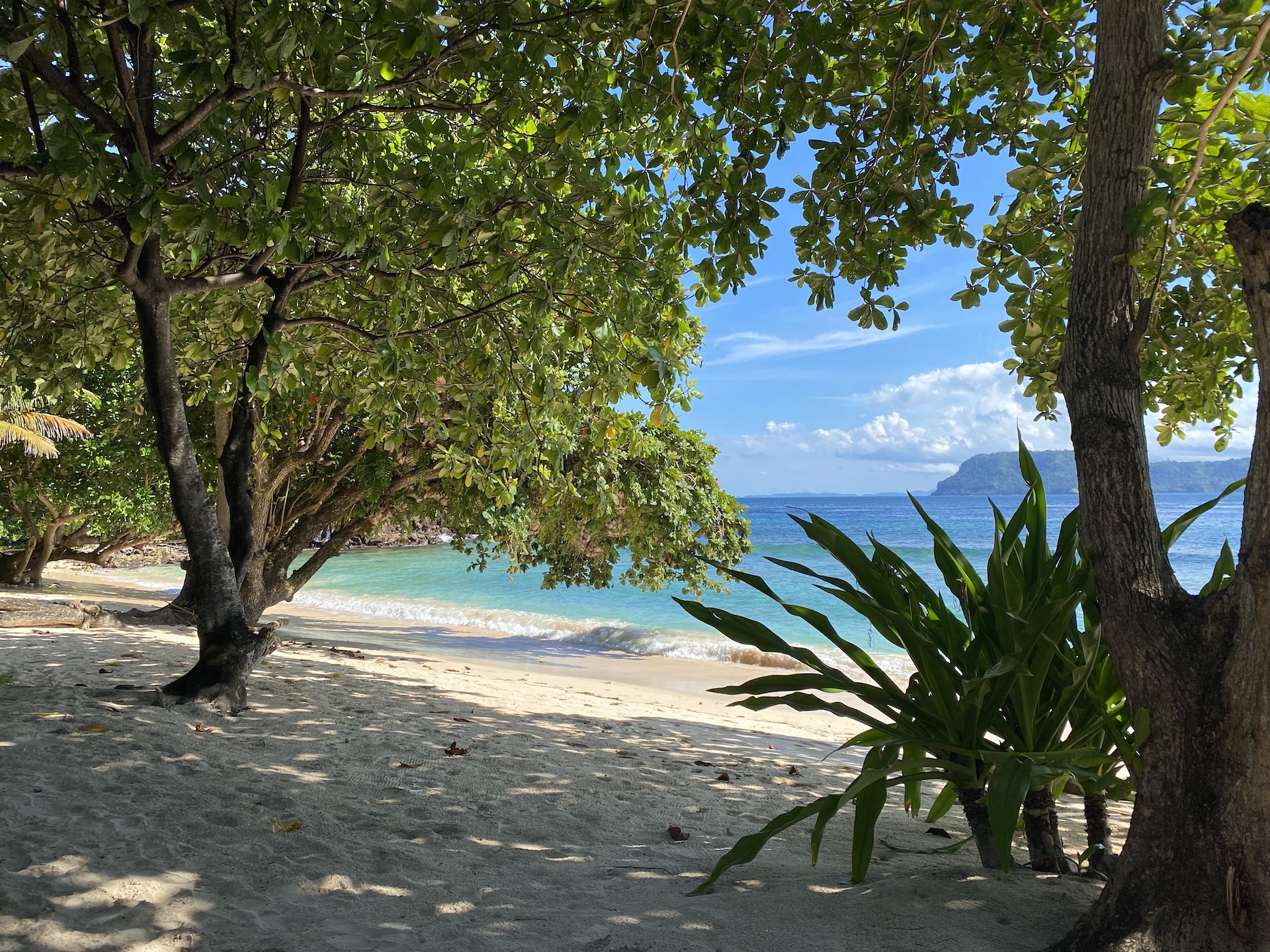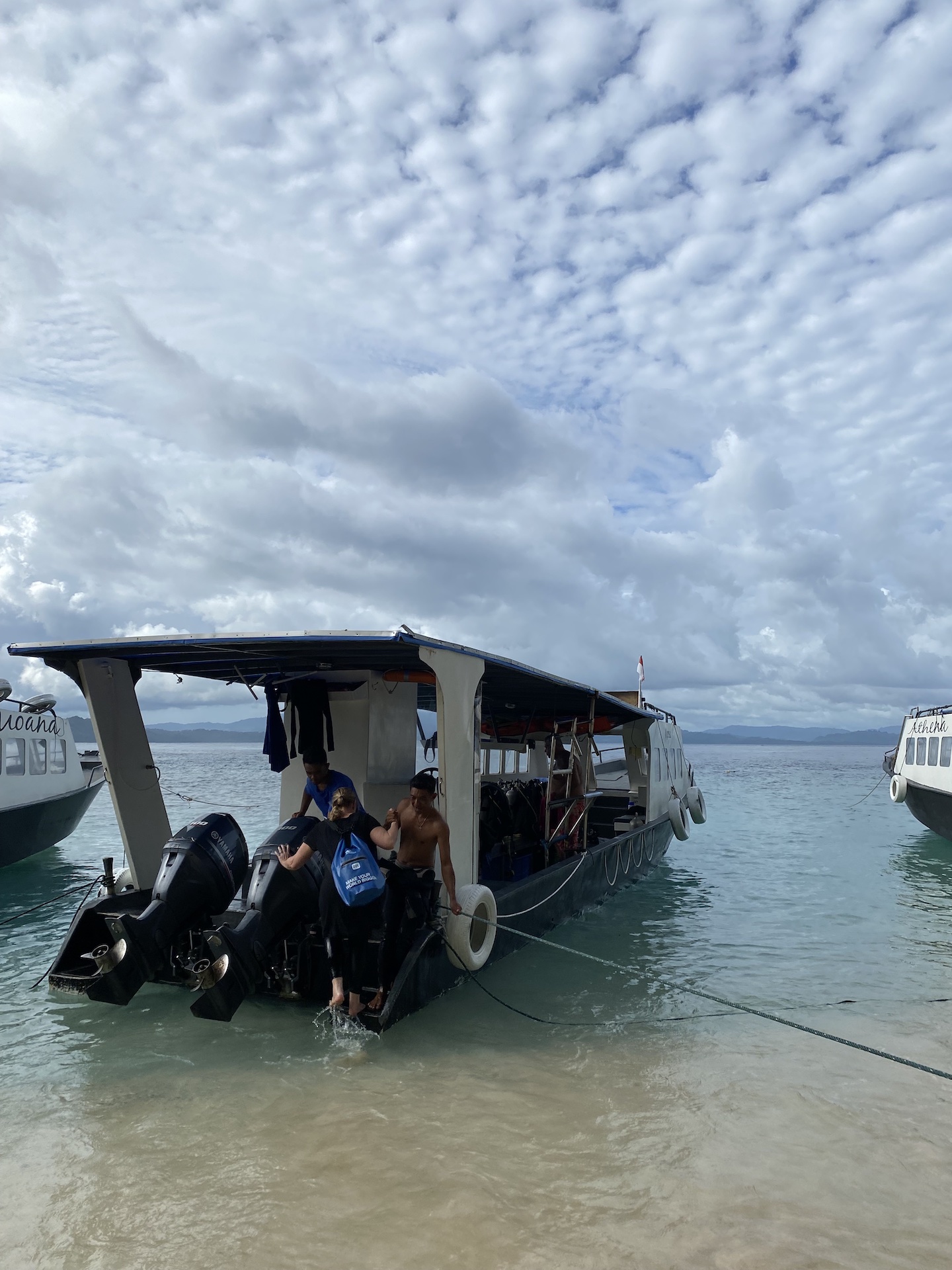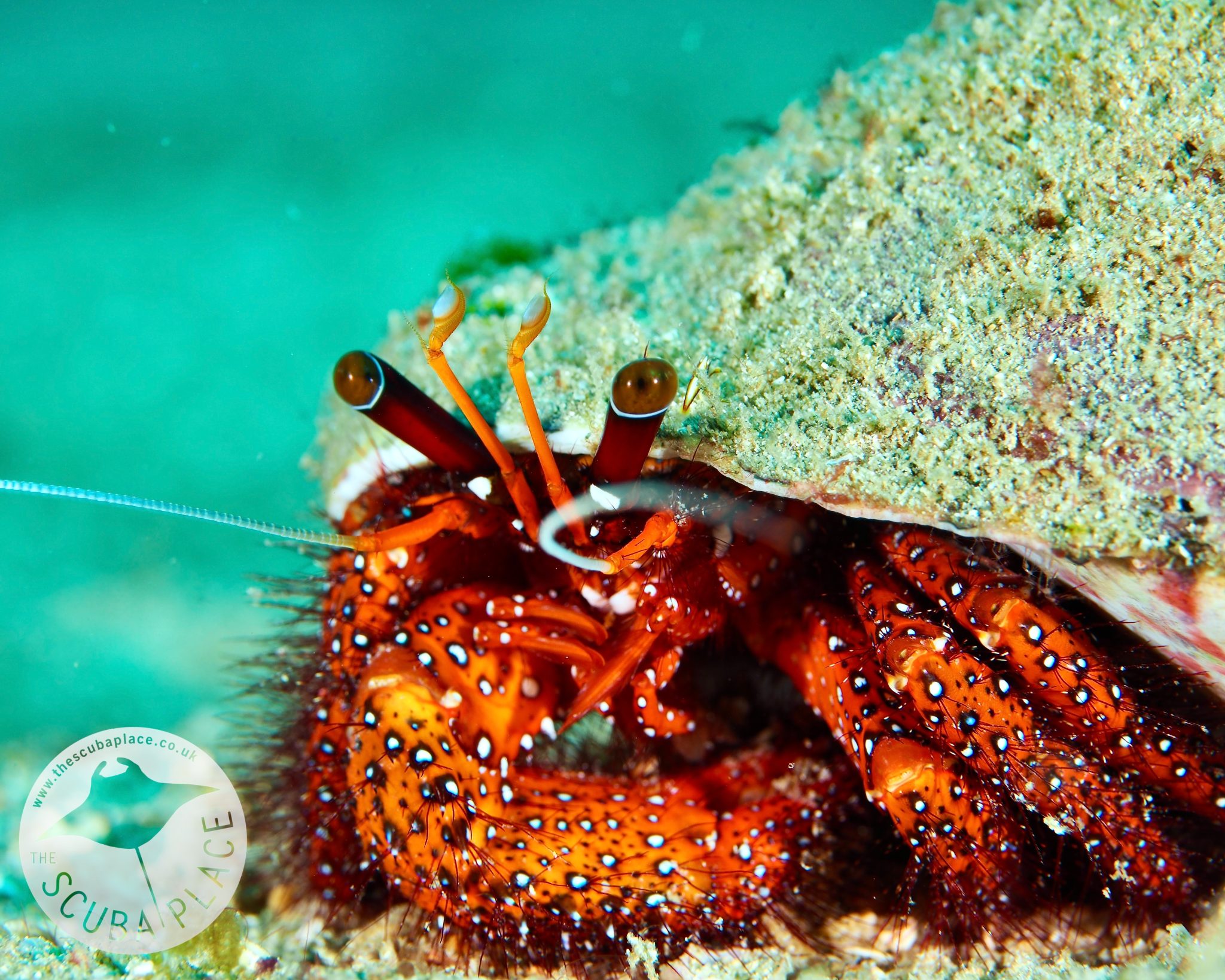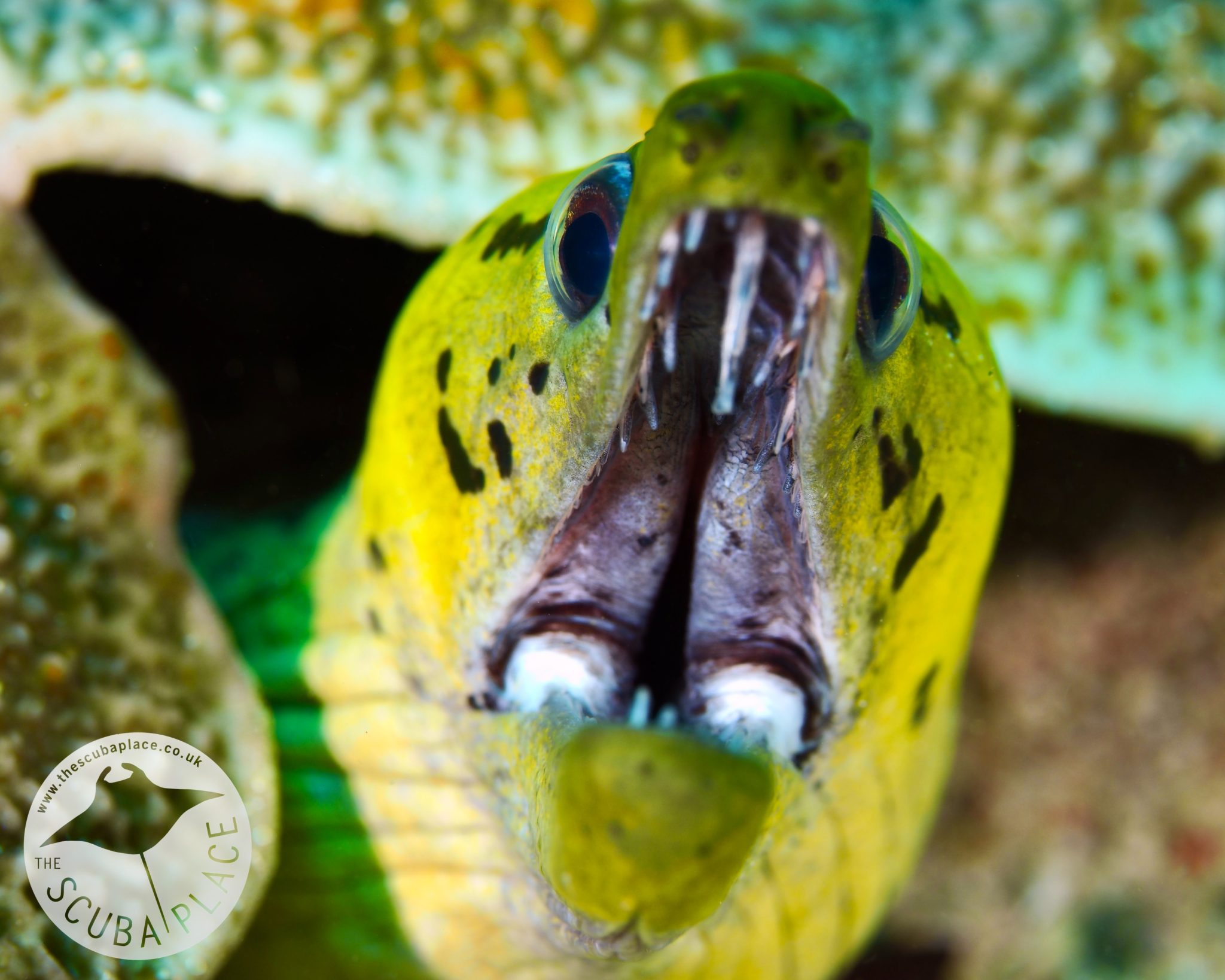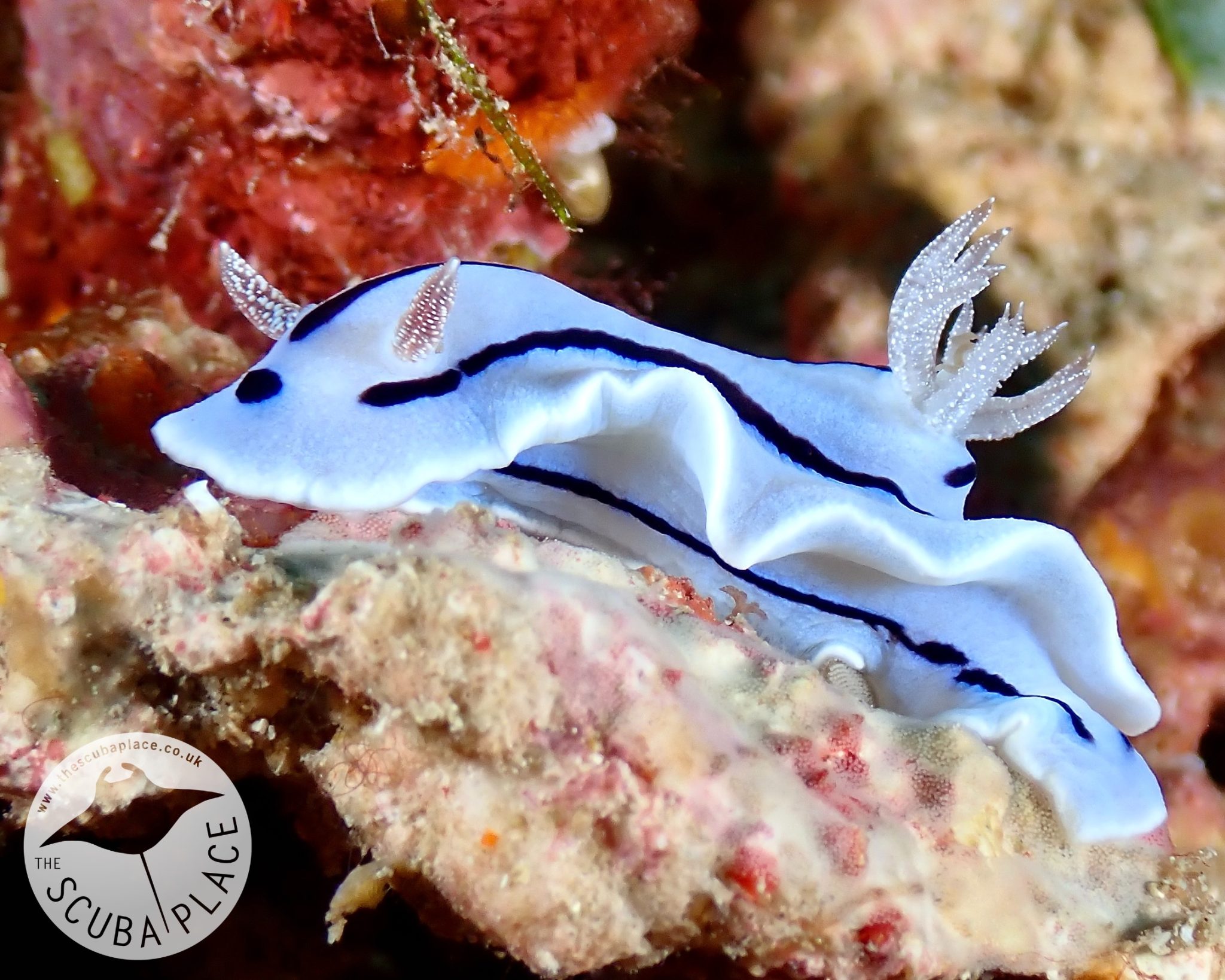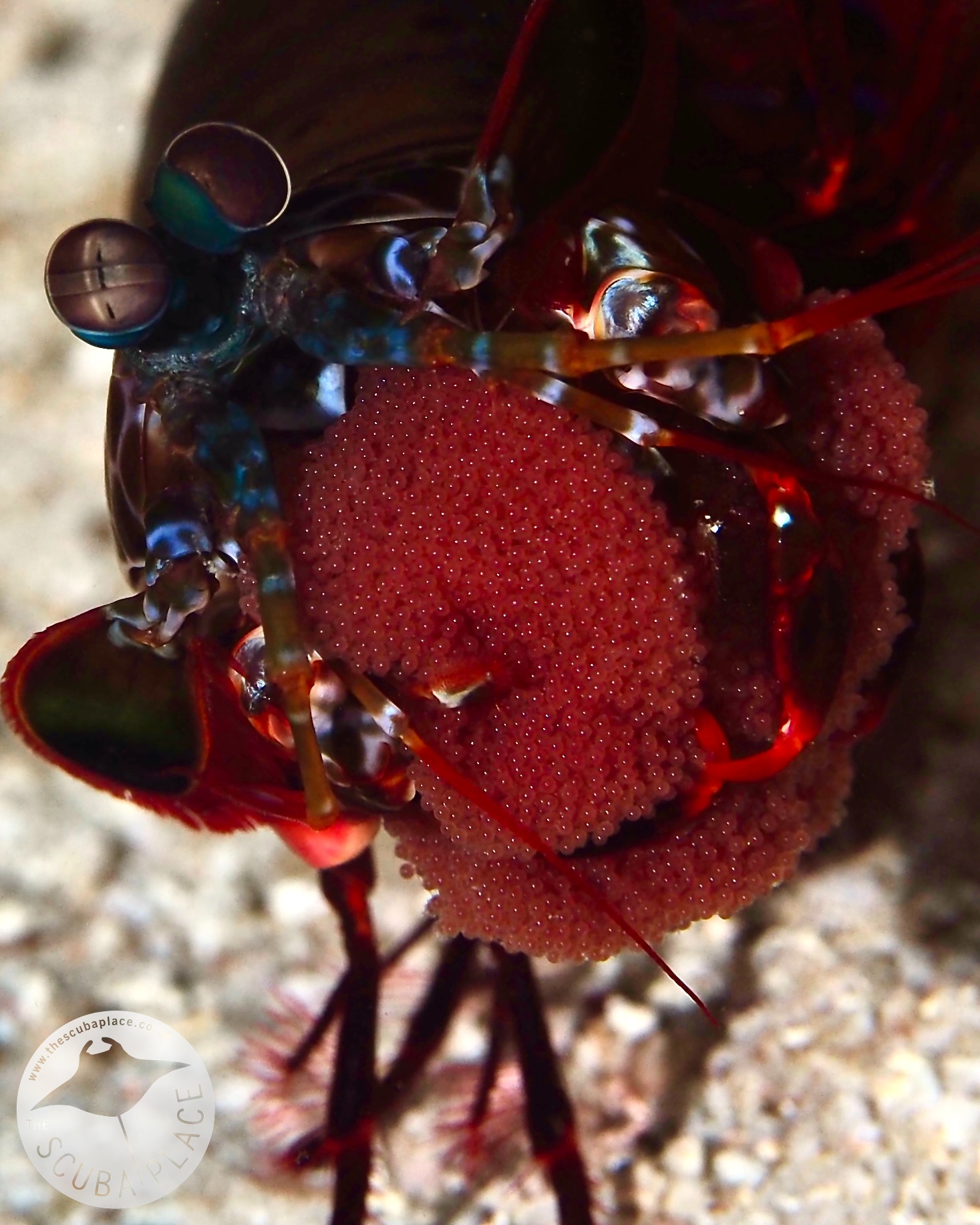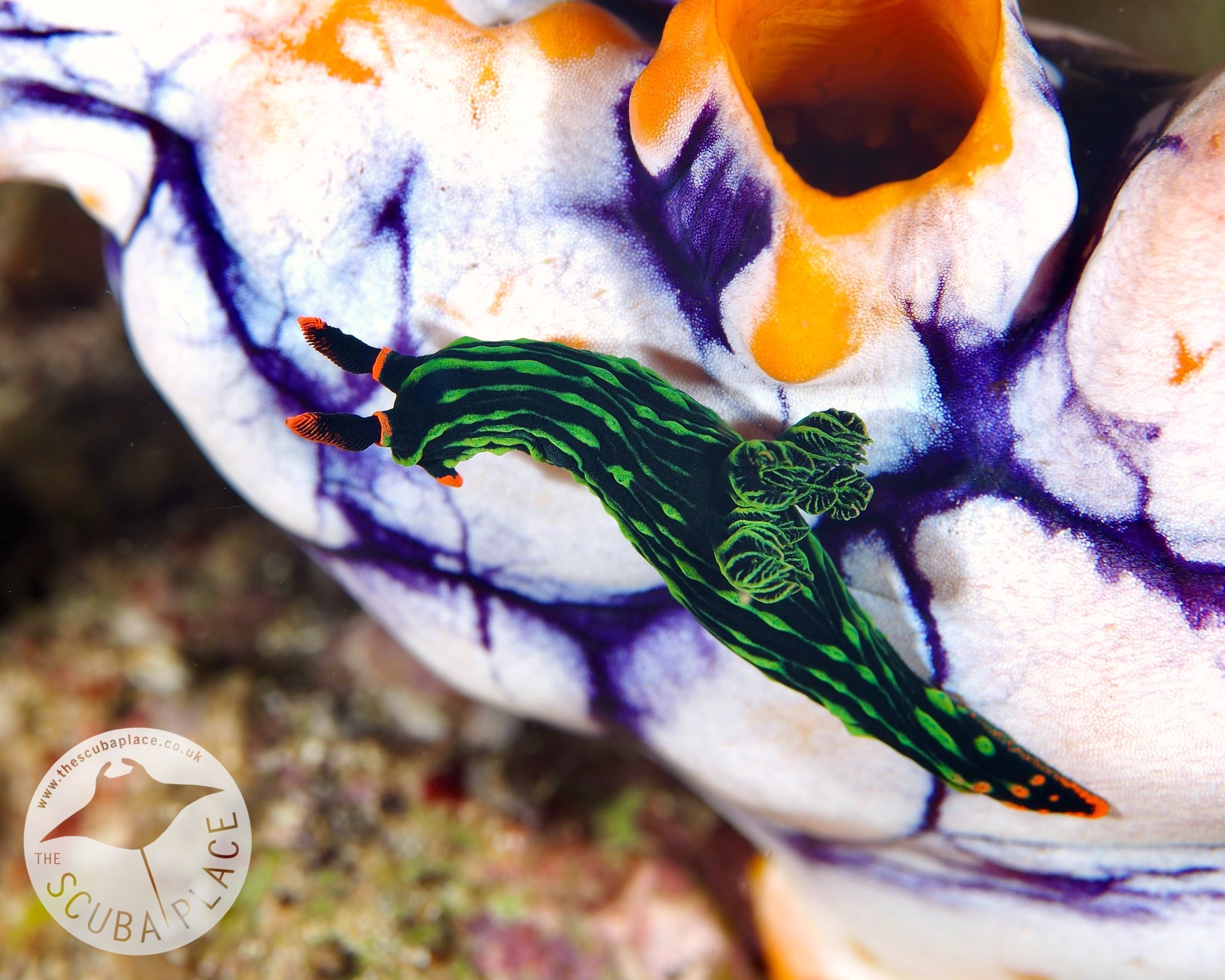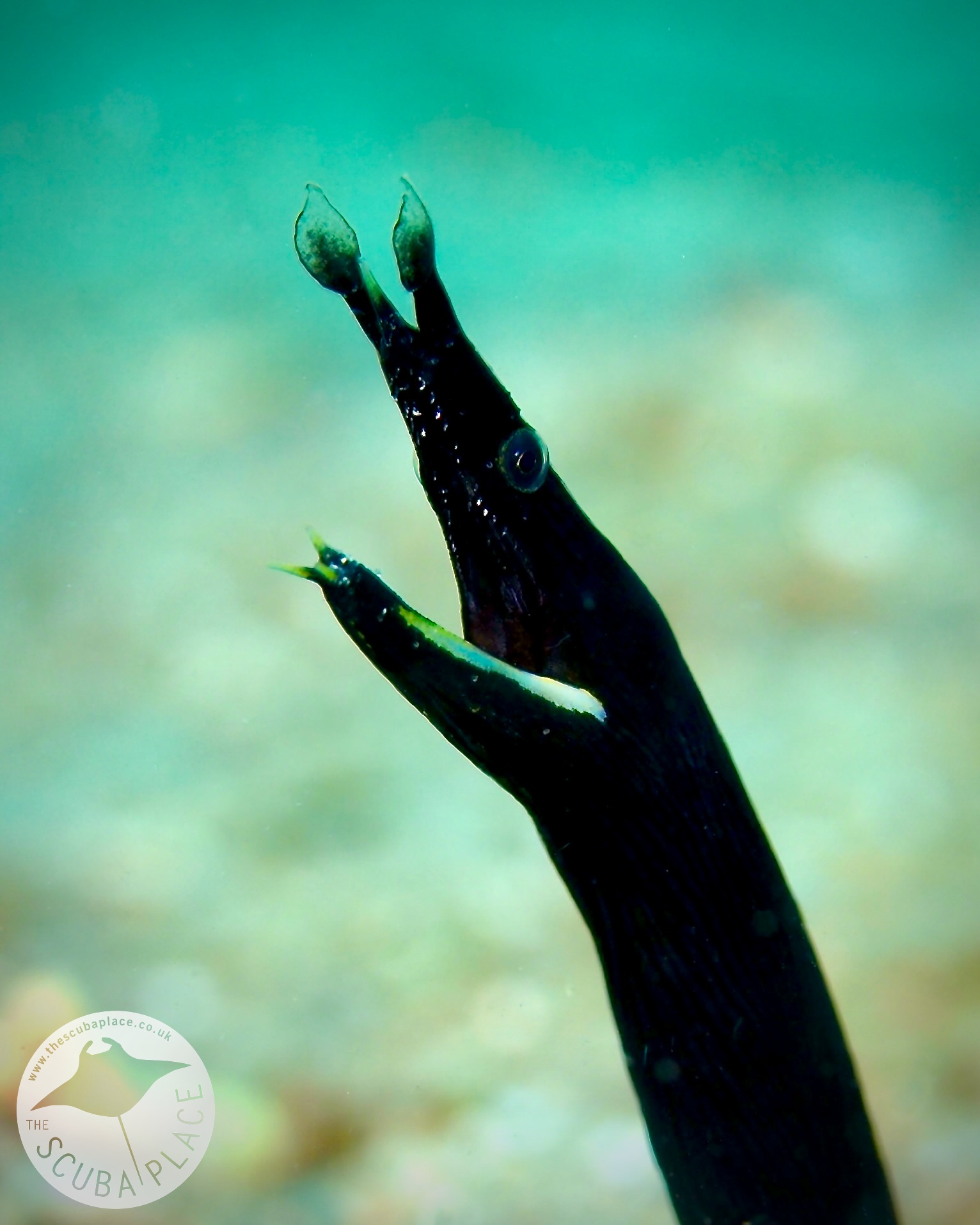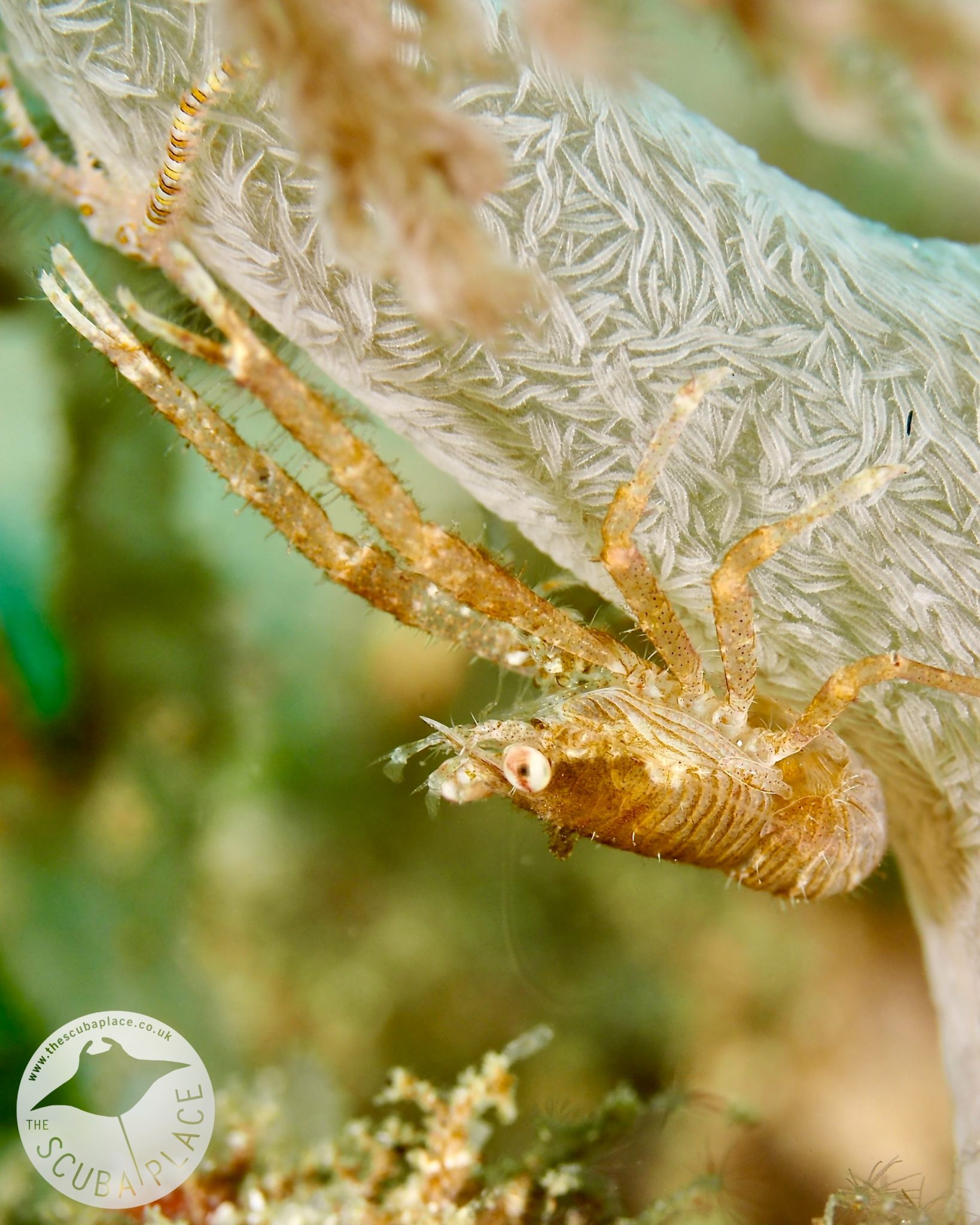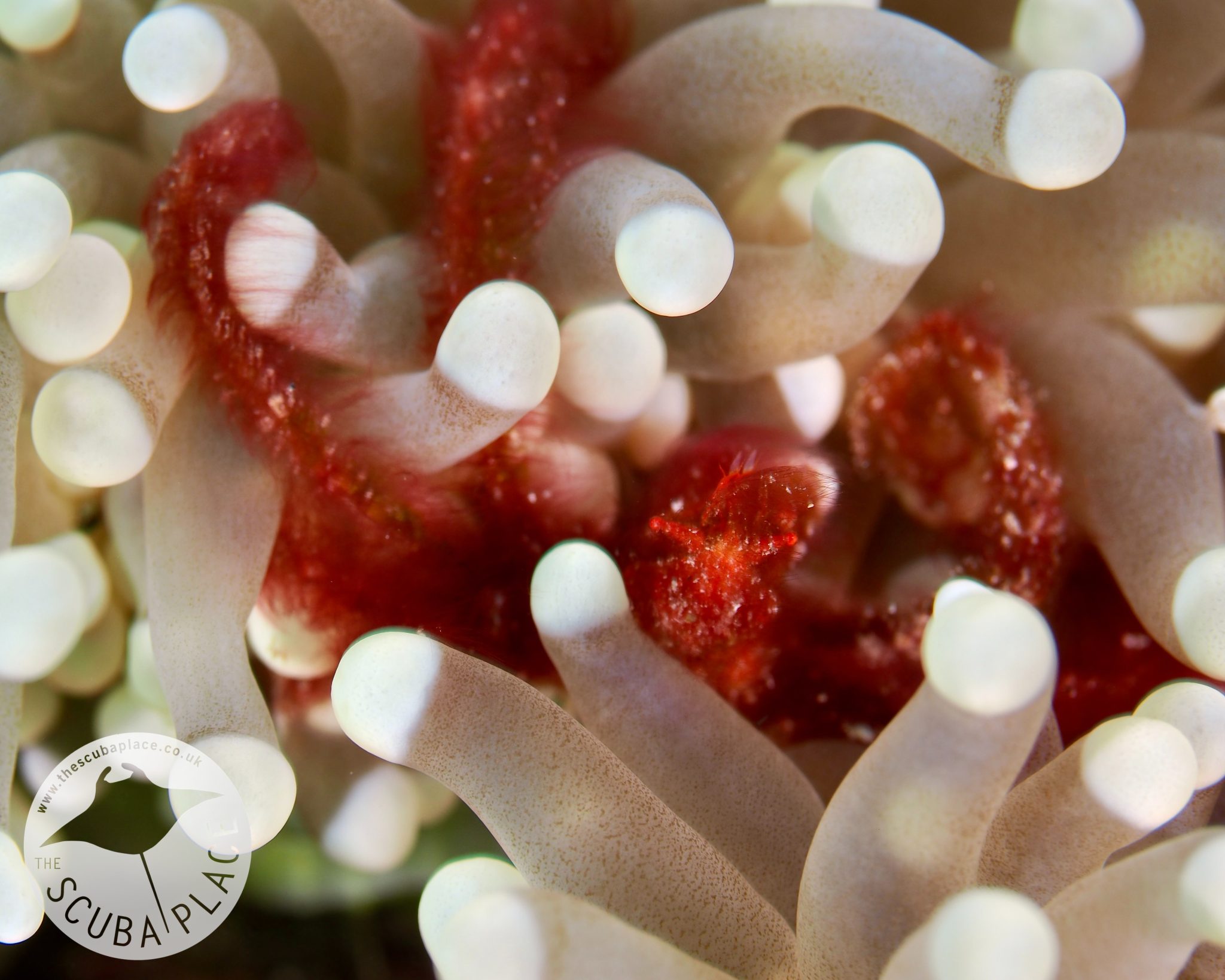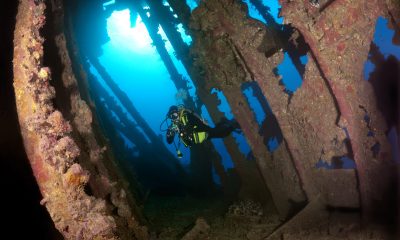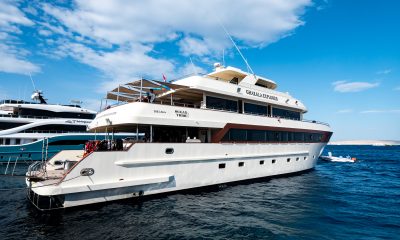Blogs
Dive Indonesia : Murex Bangka Trip Report
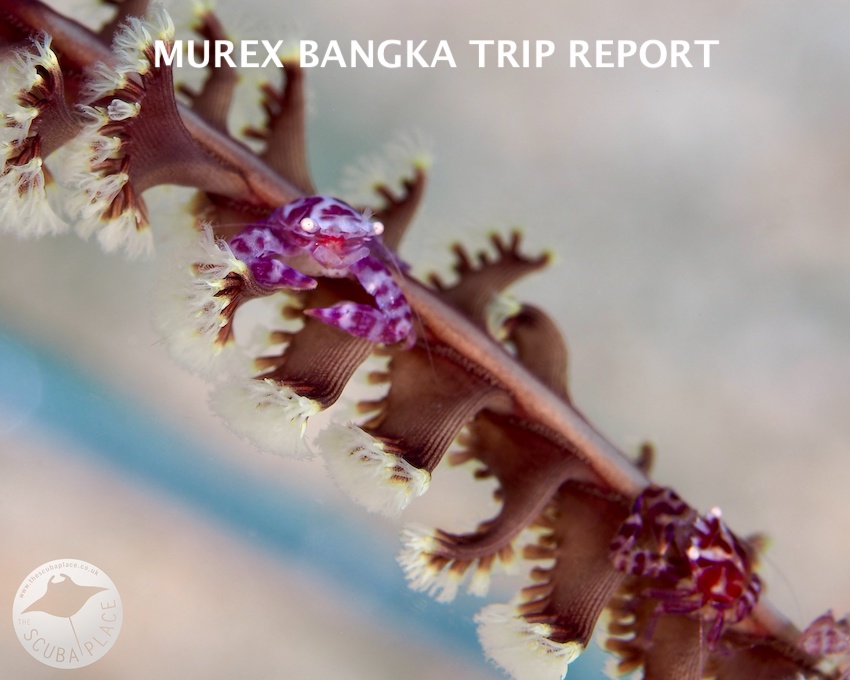
The Scuba Place spent January 2023 exploring four different resorts in Indonesia hosting a group of divers. This is Part Two of their Dive Indonesia Trip Report on Murex Bangka. Read Part One on Lembeh Resort here.
Ready for the second leg of our Passport to Paradise itinerary, we boarded our dive boat at Lembeh Resort after a fab breakfast, but this time, all our luggage was on board with us! So off we set into the bay, doing a dive, surfacing to snacks, teas and coffees, and then a second dive, before surfacing again to find ourselves navigating the Molucca Sea, approaching our second resort of the trip, Murex Resort on Bangka Island.
Bangka Island sits just off the northern tip of North Sulawesi. The small and remote island is nestled into the trees and right on the beach. This is a real ‘Robinson Crusoe’ experience – the transfer/dive boats come up to the shore, and we jumped in up to our knees to wade up the beach – palm trees overhanging the super soft white sand and a jungle vista sloping up to the sky behind the resort. What a place!
The rooms are big – lots of space to dump and store bags, plenty of power points, a desk for camera, phone and laptop stuff, and an outdoor bathroom that even has a door to the side, meaning you can come in wearing your wetsuit and get straight under the shower!
Soaps and shampoos are provided, and there are plenty of towels too. And drying racks – we can’t do without those! All the rooms also have a freshwater dispenser. Behind the beachfront cottages, are six far newer and pretty luxurious Hillside Cottages – they still have great ocean views through the trees.
Murex Bangka is totally committed to sustainability. The resort installed solar panels in 2018 and uses them to fuel aircon and hot water 24 hours a day. On the same note, no plastic bottles or straws will be found here, with a focus on recycling, effective waste management and beach/reef cleaning happening every day.
The final touches on the brand new dive centre were happening during our visit, which is very similar to that found at Lembeh Resort. A fully fitted dive facility with dedicated space for kit, benches, rinse tanks, and everything you would expect from a valet-diving style centre. There is also a dedicated air-conditioned camera room complete with ample charging points and air guns for cleaning and drying your housing.
So, beautiful location, great rooms with views, a great dive centre – it only leaves food and diving to be talked about. First the food – a blend of buffet and a la carte dining for lunch and dinner – you order the next meal before you leave the last one if a la carte is scheduled, or there is a generous buffet offering authentic Indonesian fare. Breakfast is a selection of juices, meats, cheeses, pastries, and a cooked-to-order option – good old bacon and eggs for example, but also local favourites such as nasi goreng. Afternoon snacks are laid out, so we certainly didn’t go hungry. Quantity was good, and quality too, more rustic than Lembeh but delicious, nonetheless.
So, a great place to stay, with beautiful views and sounds of the surf and jungle – good food, an on-site spa, and live music once a week………we just need great diving, and this becomes a bucket list destination.
With three large dive boats, space is great, and wading out to climb up onto the stern platform made for a simple boarding. A giant stride off the stern or backward roll takes you into the water, and big sturdy ladders are positioned for easy exit – kit and cameras can be passed up to the crew. This was very civilised diving, and with numerous sites all within a 20-minute boat ride, there is plenty to see without having to travel far.
We crammed in as many dives here as we could. Dropping in onto the top of the reef, we found that the typical dive was a shallow reef top and a sloping reef down to depth where there would be a sandy bottom. The hard and soft corals were plentiful, healthy, and full of marine life. We found the usual reef inhabitants in big numbers – schooling jacks, batfish, snapper, and wrasse of all types, and some pretty impressive moray eels too. A pair of huge black frogfish entertained us for one whole dive as they hopped from coral to coral, paying us absolutely no attention at all! We encountered a few turtles, some immense puffer fish, lobsters and even the odd passing tuna made up the larger marine life. Numerous nudibranchs and critters drew us down to the sand……finding the tiniest of porcelain crabs gathering on a sea pen was one of the highlights of all my diving to date – almost invisible to the naked eye!
In a nutshell, fab diving! The genuine blend of muck with reefs and walls here is great for everyone, and with such small groups of divers, catering for individual preferences isn’t an issue. There were even a couple of dives where we jumped into a great current, making a proper drift dive, thus delivering some adrenaline too.
And, as with Part 1 of this series of trip reports, the dive staff are incredible. How they see these things, we do not know, but they find them, and every time! Gentle, and relaxed, with no dictated dive times, and the sound of rattles underwater being incredibly rare, this is genuinely beautiful, relaxed diving at its best.
The only question left to ask, and the answer is: Would we go back? Begins with Y and ends in ES!! And then again.
Key Facts :
- Getting there : Flights with Emirates Airlines to Manado depart from any major UK airport via Dubai and Jakarta or Singapore Airlines via Singapore and Jakarta. On Emirates from London Heathrow it was a 7-hour flight with a quick two-hour layover in Dubai followed by an 8-hour flight to Jakarta. We had a longer layover in Jakarta so we booked a room at FM7 Hotel, a quick 20 minutes from the airport for a much-needed shower and a kip. The comfortable double room was £36 and offers a free shuttle to and from the airport. Our final flight on domestic carrier Garuda to Manado was 3½ hours. 30 to 35kg baggage allowance is typical. Transport from Manado to Bangka is by car and then speedboat to the island.
- Air temperature : Tropical – average daily temperature throughout the year is 28-30°C, with the humidity at 85-90%. The rainy season is considered to be November to May with peak rainfall in January.
- Water temperature : 26-29°C. A 1-3mm full suit or shorty will suit most.
- Visa requirement : Tourist visa is purchased on arrival for £30 or IDR 500,000.
- Health protocols : When we travelled, visitors were mandated to download an app “Pedulilindungi”. This required us to upload our proof of COVID vaccination and booster and approval was received within 24 hours. Upon arrival, we provided a QR code generated by the app, had our temperature taken and then we were off.
- Currency : Indonesian rupiah, US dollars or Euros on resort. We often find the exchange rate is better at the destination country. ATMs and exchange desks are available at the airport. The resort also accepted credit cards to settle our bill quoted in rupiah.
- Electricity : 230V with European style (round pin) two-prong plugs. Our adaptor worked without issue, and the camera room had extension leads with UK plugs.
- Internet and Wi-Fi : Wi-fi is available at no charge at the resort. The best signal around the resort was at the restaurant.
Price Guide: Expect from £1,999 per person based on two sharing a beachfront room for a 7-night itinerary with full board and 10 dives. Return flights and transfers are included.
Our Advice: With a long travel time consider the Passport to Paradise itinerary to take in Lembeh and Bunaken. We travelled to Lembeh Resort, Murex Bangka and Murex Manado Resort. Check out our trip report on Lembeh and stay tuned for more on Murex Manado!! With numerous routes from the UK to choose from, any duration can easily be arranged.
Additional costs:
- Tourist Visa : £30 purchased on arrival.
- Food & Drink : Speciality drinks, adult beverages, sodas and snacks at Bangka Resort. Fancy coffees, milkshakes, sodas, beers, wine, and cocktails were always available and affordable.
- Diving Extras : Three boat dives are offered daily along with the option to sign up for additional dives. We purchased a 2 dives/day package for our trip. NITROX was an extra charge and was paid for at the end of the trip.
- Tips : We would suggest a minimum of £15 per day to cover the dive centre and resort staff. Individual tips for special service are up to you!
Things to Pack :
- Dry bag : A small dry bag for daily boat dives is always handy to keep your personal items together and protected.
- Bug spray : When the sun went down, the mozzies came out!
- Medicated or drying ear drops : On a long trip with lots of diving, our ears tend to get a little sensitive so we try to be prepared.
- Rechargeable personal fan : Found on Amazon these have become a traveller favourite!
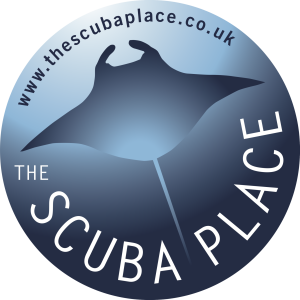 The Scuba Place designs and builds custom scuba diving holidays. With personal knowledge and experience diving in many of our destinations, there is no one better to help build your dream dive holiday. Come Dive with Us!
The Scuba Place designs and builds custom scuba diving holidays. With personal knowledge and experience diving in many of our destinations, there is no one better to help build your dream dive holiday. Come Dive with Us!
Call us at 020 3515 9955 or email at reservations@thescubaplace.co.uk
Find us on
Facebook : https://www.facebook.com/thescubaplace
Instagram : https://www.instagram.com/the.scuba.place/
YouTube : https://www.youtube.com/channel/UCH684OdioYirI-zzdT58Ceg
Blogs
Northern Red Sea Reefs and Wrecks Trip Report, Part 3: The Mighty Thistlegorm
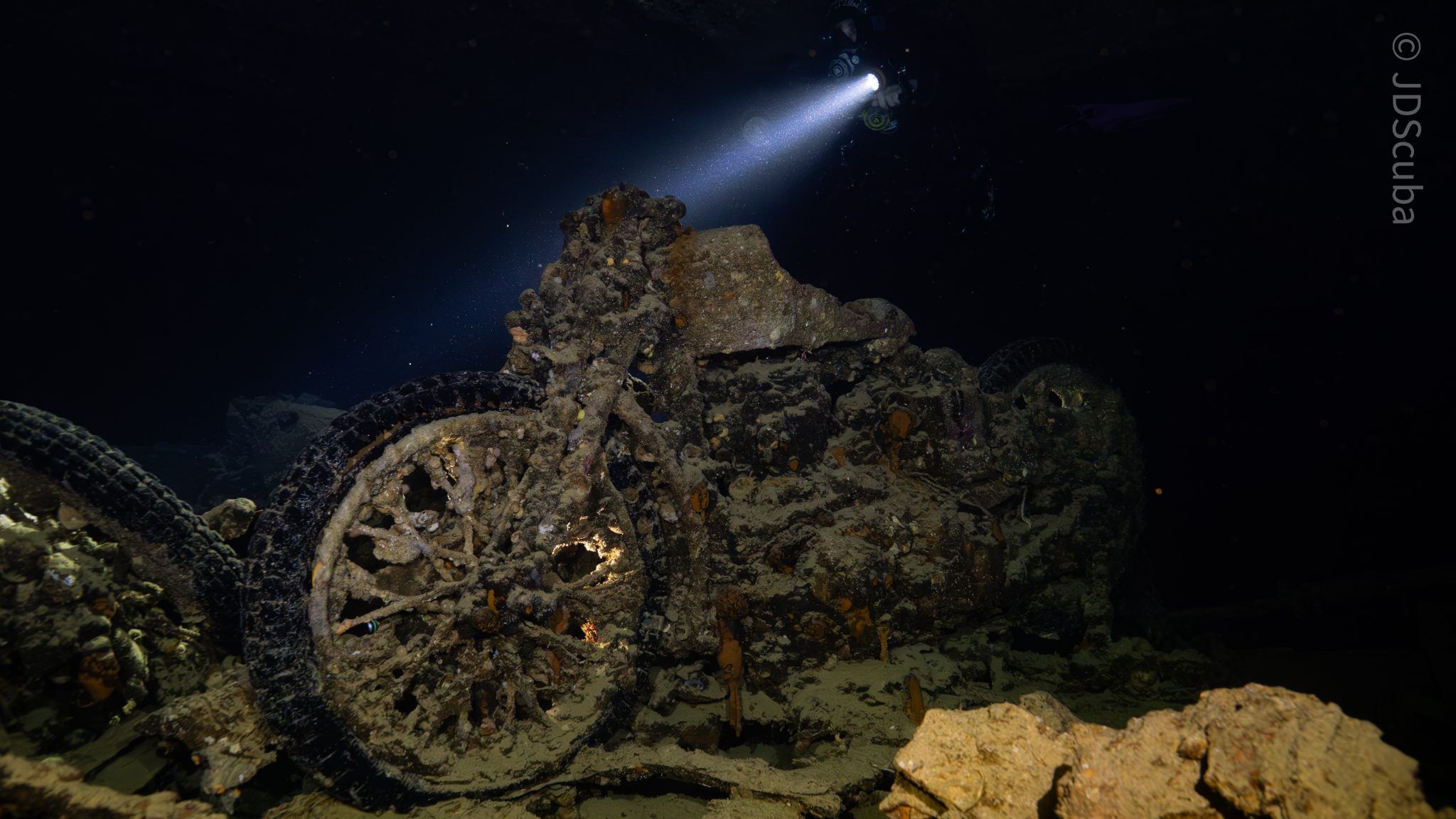
Jake Davies boards Ghazala Explorer for an unforgettable Red Sea diving experience…
Overnight, the wind picked up, making the planned morning dive a bit bumpy on the Zodiacs to the drop point on Thomas Reef. There, we would dive along the reef before descending through the canyon and then passing under the arch before ascending the wall with a gentle drift. The site provided great encounters with more pelagic species, including shoals of large barracuda, tuna, and bigeye trevally.
Once back on the boat, it was time to get everything tied down again as we would head back south. This time, with the wind behind us, heading to Ras Mohammed to dive Jackfish Alley for another great gentle drift wall dive before then heading up the coast towards the Gulf of Suez to moor up at the wreck of the Thistlegorm. This being the highlight wreck dive of the trip and for many onboard, including myself, it was the first time diving this iconic wreck. I had heard so much about the wreck from friends, and globally, this is a must on any diver’s list. Fortunately for us, there was only one other boat at the site, which was a rarity. A great briefing was delivered by Ahmed, who provided a detailed background about the wreck’s history along with all the required safety information as the currents and visibility at the site can be variable.
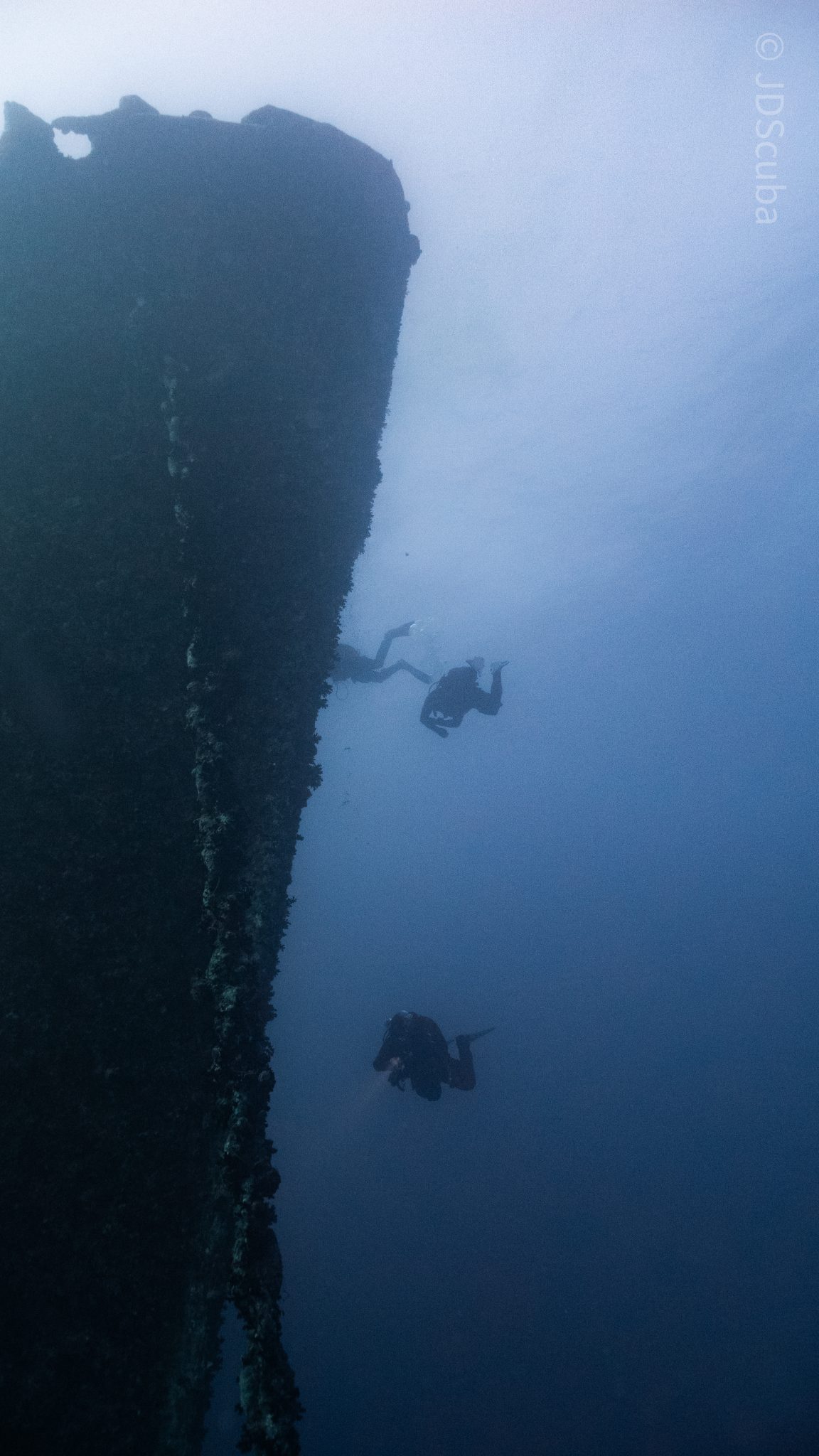
Kitting up, there was a lot of excitement on deck before entering the water and heading down the shoreline. Descending to the wreck, there was a light northerly current which reduced the visibility, making it feel more like the conditions that can be found off the Welsh coast. At 10m from the bottom, the outline of the wreck appeared as we reached the area of the wreck which had been bombed, as our mooring line was attached to part of the propeller shaft. Arriving on deck, instantly everywhere you looked there were many of the supplies which the ship was carrying, including Bren Carrier tanks and projectiles that instantly stood out.
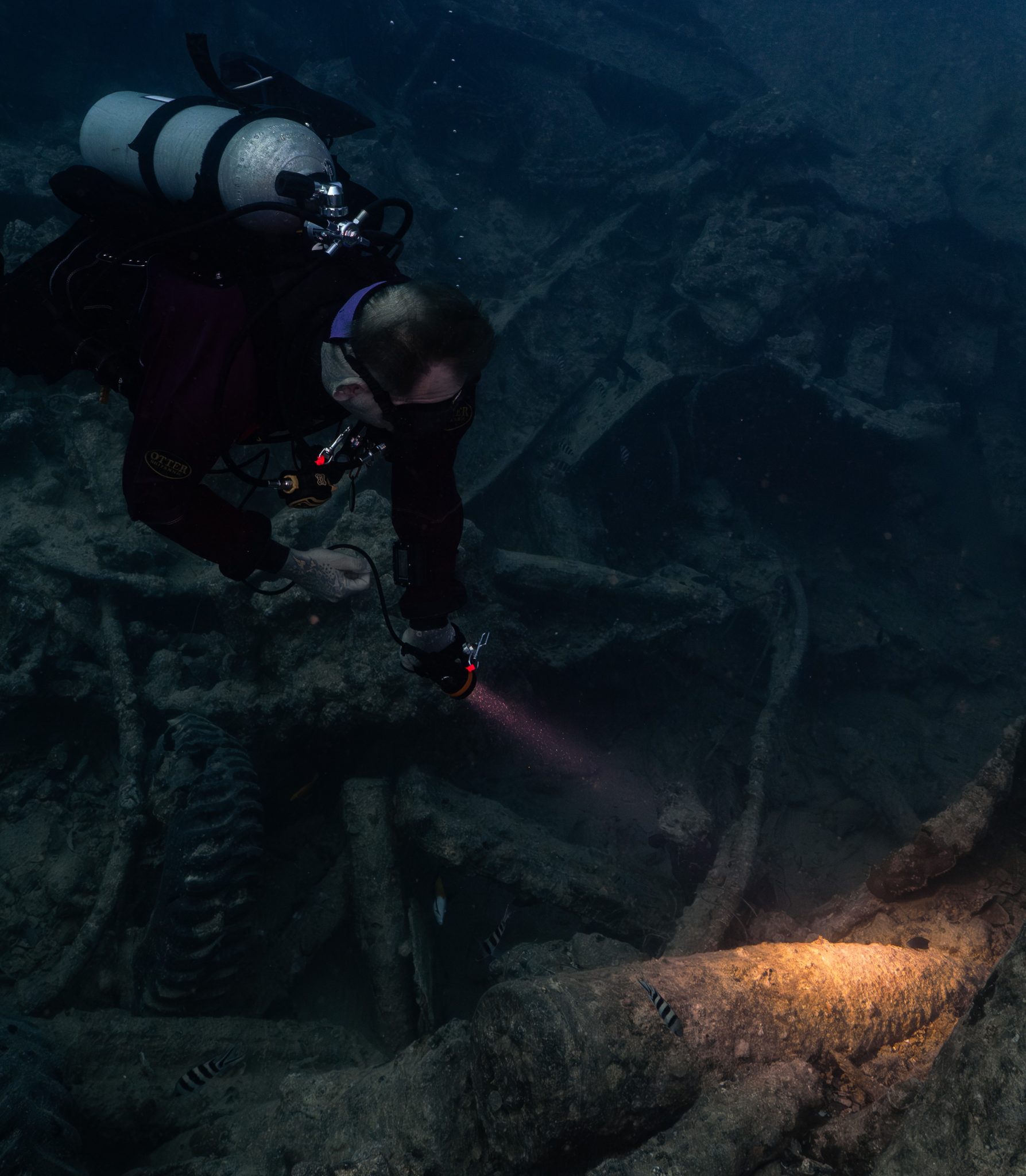
We headed around the exterior, taking a look at the large propeller and guns mounted on deck before entering the wreck on the port side to take a look in the holds. It was incredible to see all the trucks, Norton 16H, and BSA motorcycles still perfectly stacked within, providing a real snapshot in time.
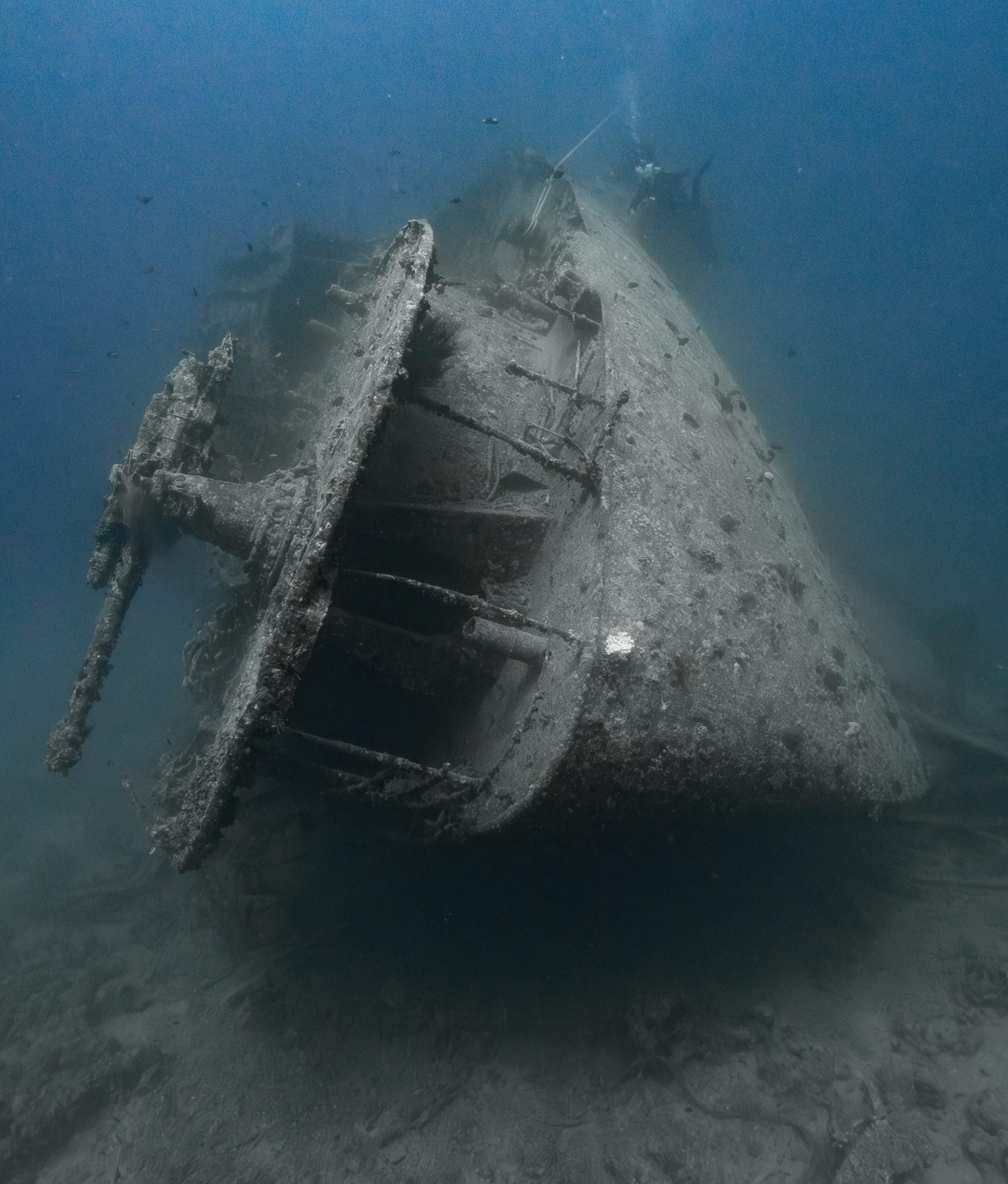
Overall, we had four dives on the Thistlegorm, where for all of the dives we were the only group in the water, and at times, there were just three of us on the whole wreck, which made it even more special, especially knowing that most days the wreck has hundreds of divers. Along with the history of the wreck, there was plenty of marine life on the wreck and around, from big green turtles to batfish, along with shoals of mackerel being hunted by trevally. Some unforgettable dives.
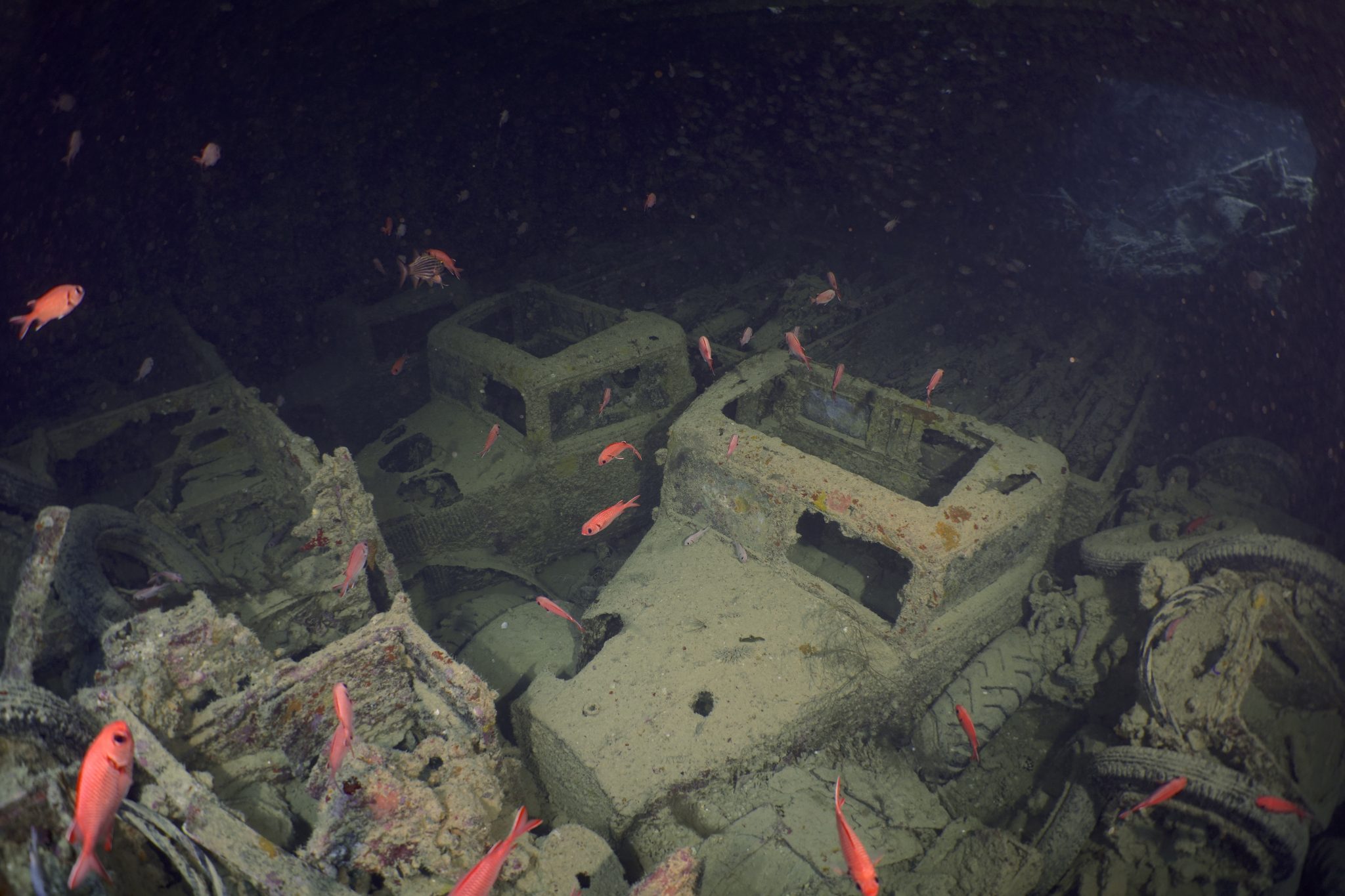
The final leg of the trip saw us cross back over the Suez Canal to the Gobal Islands where we planned to stay the night and do three dives at the Dolphin House for the potential of sharing the dive with dolphins. The site, which included a channel that was teeming with reef fish, especially large numbers of goatfish that swam in large shoals along the edge of the reef. These were nice relaxing dives to end the week. Unfortunately, the dolphins didn’t show up, which was okay as like all marine life they are difficult to predict and you can’t guarantee what’s going to be seen. With the last dive complete, we headed back to port for the final night where it was time to clean all the kit and pack before the departure flight the next day.
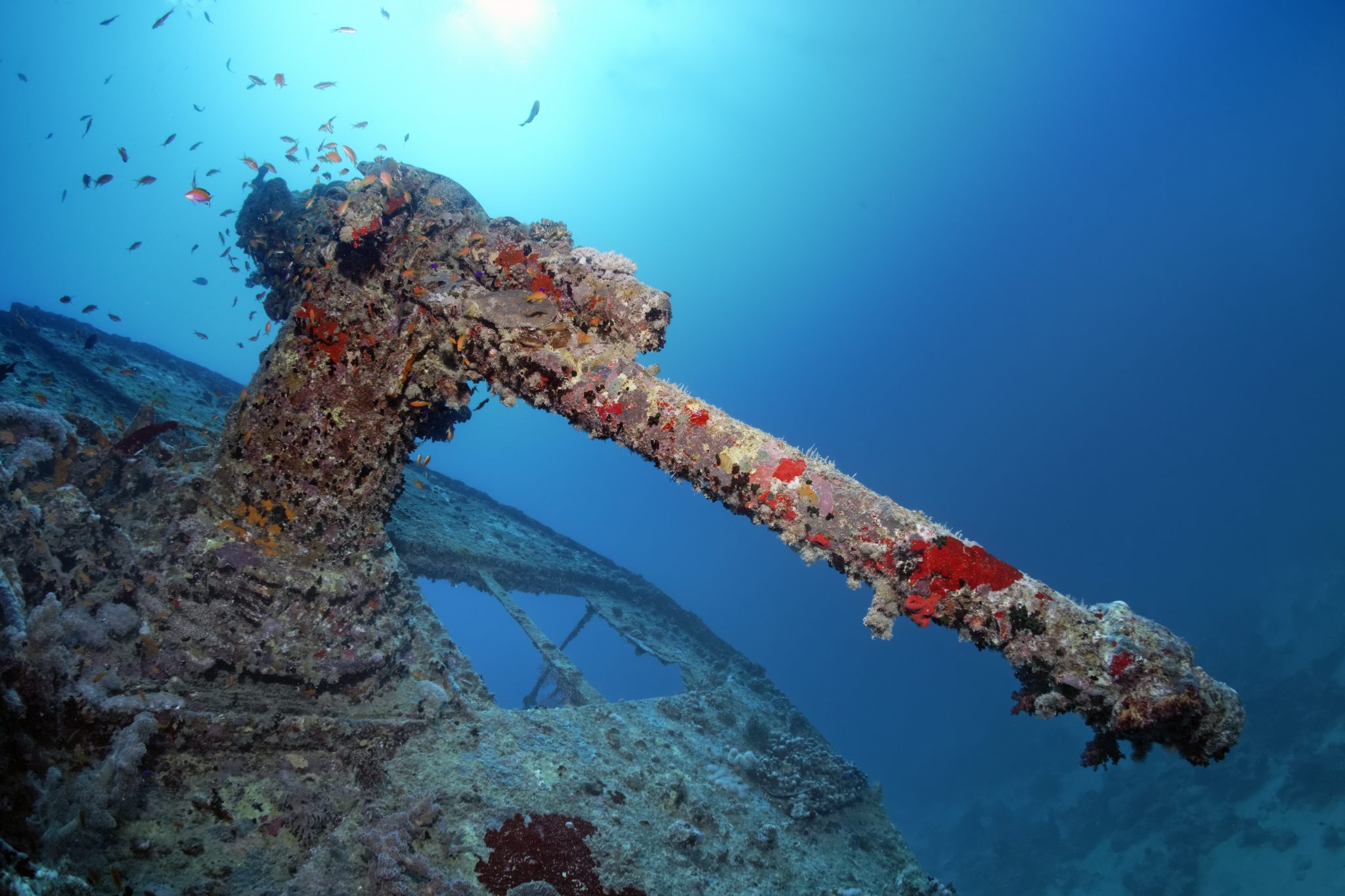
The whole week from start to finish on Ghazala Explorer was amazing; the boat had all the facilities you need for a comfortable week aboard. The crew were always there to help throughout the day and the chefs providing top quality food which was required after every dive. The itinerary providing some of the best diving with a nice mixture of wreck and reef dives. I would recommend the trip to anyone, whether it’s your first Red Sea liveaboard in the Red Sea or you’re revisiting. Hopefully, it’s not too long before I head back to explore more of the Red Sea onboard Ghazala Explorer.
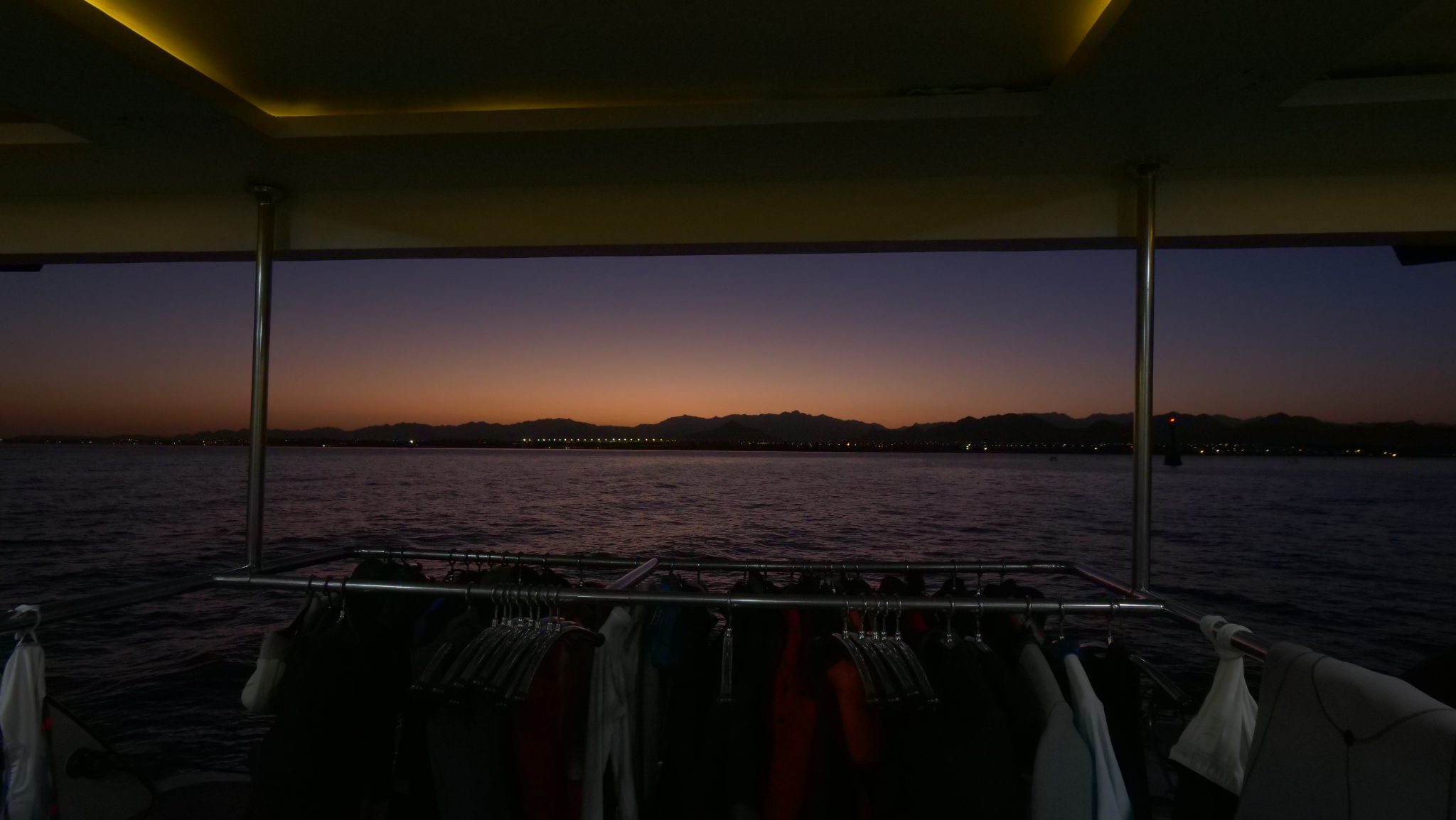
To find out more about the Northern Red Sea reef and wrecks itineraries aboard Ghazala Explorer, or to book, contact Scuba Travel now:
Email: dive@scubatravel.com
Tel: +44 (0)1483 411590
Photos: Jake Davies / Avalon.Red
Blogs
Northern Red Sea Reefs and Wrecks Trip Report, Part 2: Wall to Wall Wrecks
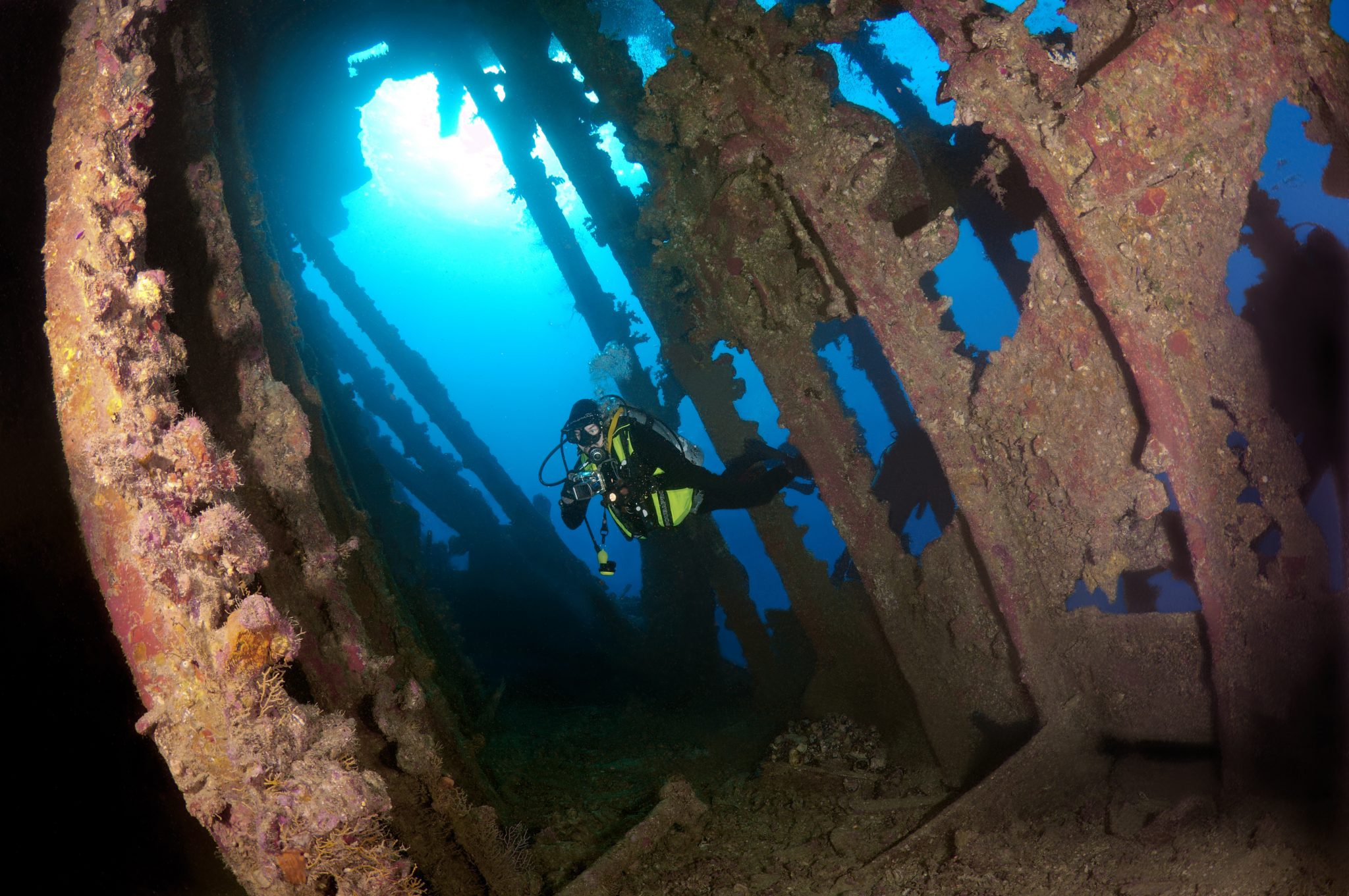
Jake Davies boards Ghazala Explorer for an unforgettable Red Sea diving experience…
The second day’s diving was a day full of wreck diving at Abu Nuhas, which included the Chrisoula K, Carnatic, and Ghiannis D. The first dive of the day was onto the Chrisoula K, also known as the wreck of tiles. The 98m vessel remains largely intact where she was loaded with tiles which can be seen throughout the hold. The stern sits at 26m and the bow just below the surface. One of the highlights of the wreck is heading inside and seeing the workroom where the machinery used for cutting the tiles are perfectly intact. The bow provided some relaxing scenery as the bright sunlight highlighted the colours of the soft coral reef and the many reef fish.
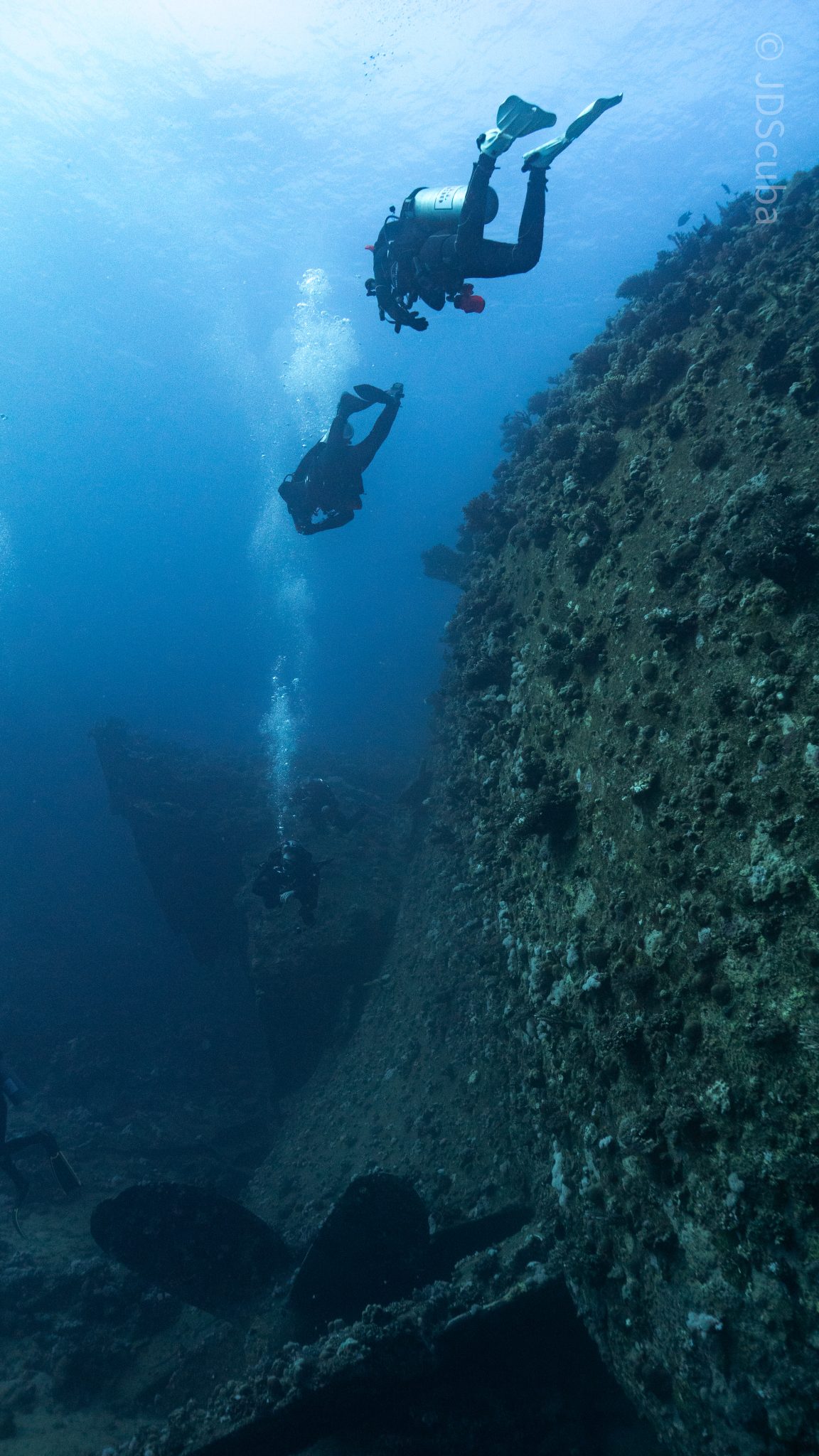
Following breakfast, we then headed to the next wreck, which was the Carnatic. The Carnatic is an 89.9m sail steamer vessel that was built in Britain back in 1862. She ran aground on the reef back in 1869 and remains at 27m. At the time, she was carrying a range of items, including 40,000 sterling in gold. An impressive wreck where much of the superstructure remains, and the two large masts lay on the seafloor. The wooden ribs of the hull provide structures for lots of soft corals, and into the stern section, the light beams through, bouncing off the large shoals of glass fish that can be found using the structure as shelter from the larger predators that are found outside of the wreck.
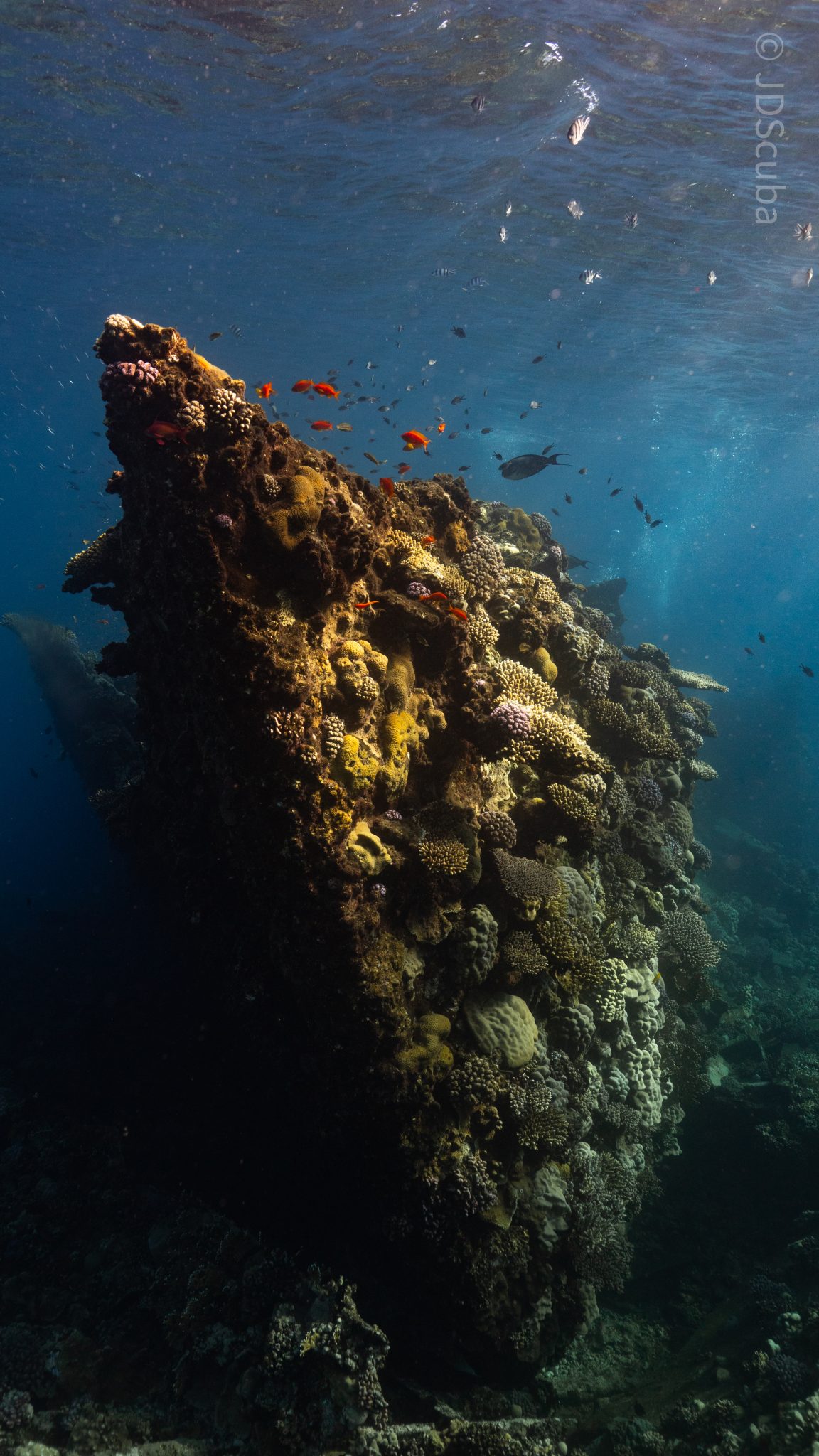
The final wreck at Abu Nuhas was the Ghiannis D, originally called ‘Shoyo Maru,’ which was 99.5m long and built in Japan back in 1969 before becoming a Greek-registered cargo ship in 1980. The ship then ran aground on the reef on April 19th, 1983, and now sits at the bottom at a depth of 27m. Heading down the line, the stern of the ship remains in good condition compared to the rest of the hull. The highlight of the wreck, though, is heading into the stern section and down the flights of stairs to enter the engine room, which remains in good condition and is definitely worth exploring. After exploring the interior section of the ship, we then headed over to see the rest of the superstructure, where it’s particularly interesting to see the large table corals that have grown at the bow relatively quickly considering the date the ship sank. After surfacing and enjoying some afternoon snacks, we made sure everything was strapped down and secured as we would be heading north and crossing the Gulf of Suez, where the winds were still creating plenty of chop.
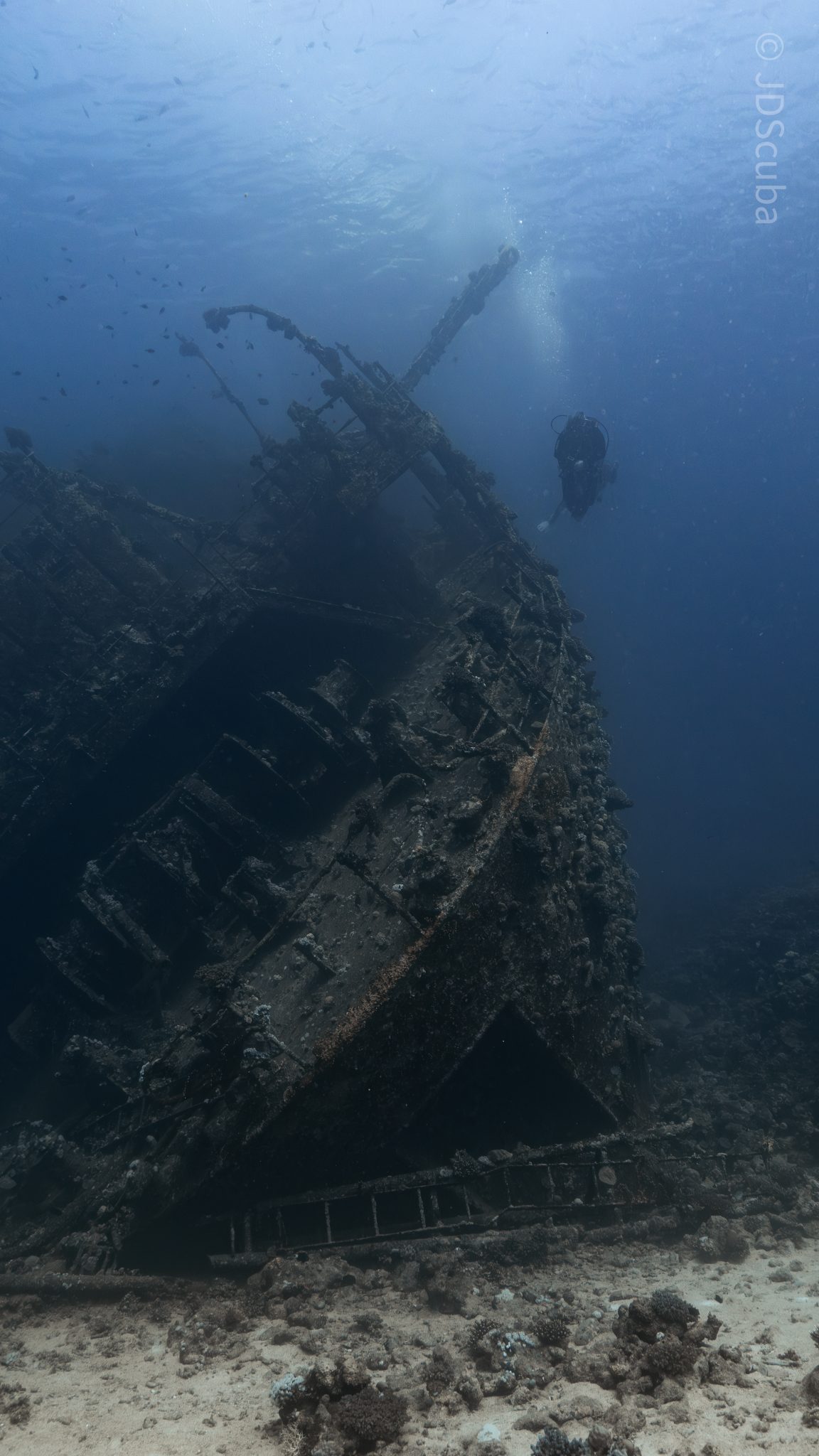
The next morning, it was a short hop to Ras Mohammed Nature Reserve for the next couple of days of diving. The 6am wake-up call came along with the briefing for the first site we would be diving, which was Shark & Yolanda. The low current conditions allowed us to start the dive at Anemone City, where we would drift along the steep, coral-filled wall. These dives involved drifts, as mooring in Ras Mohammed wasn’t allowed to protect the reefs. As a dive site, Shark & Yolanda is well-known and historically had a lot of sharks, but unfortunately not so many in recent years, especially not so early in the season. However, there was always a chance when looking out into the blue.
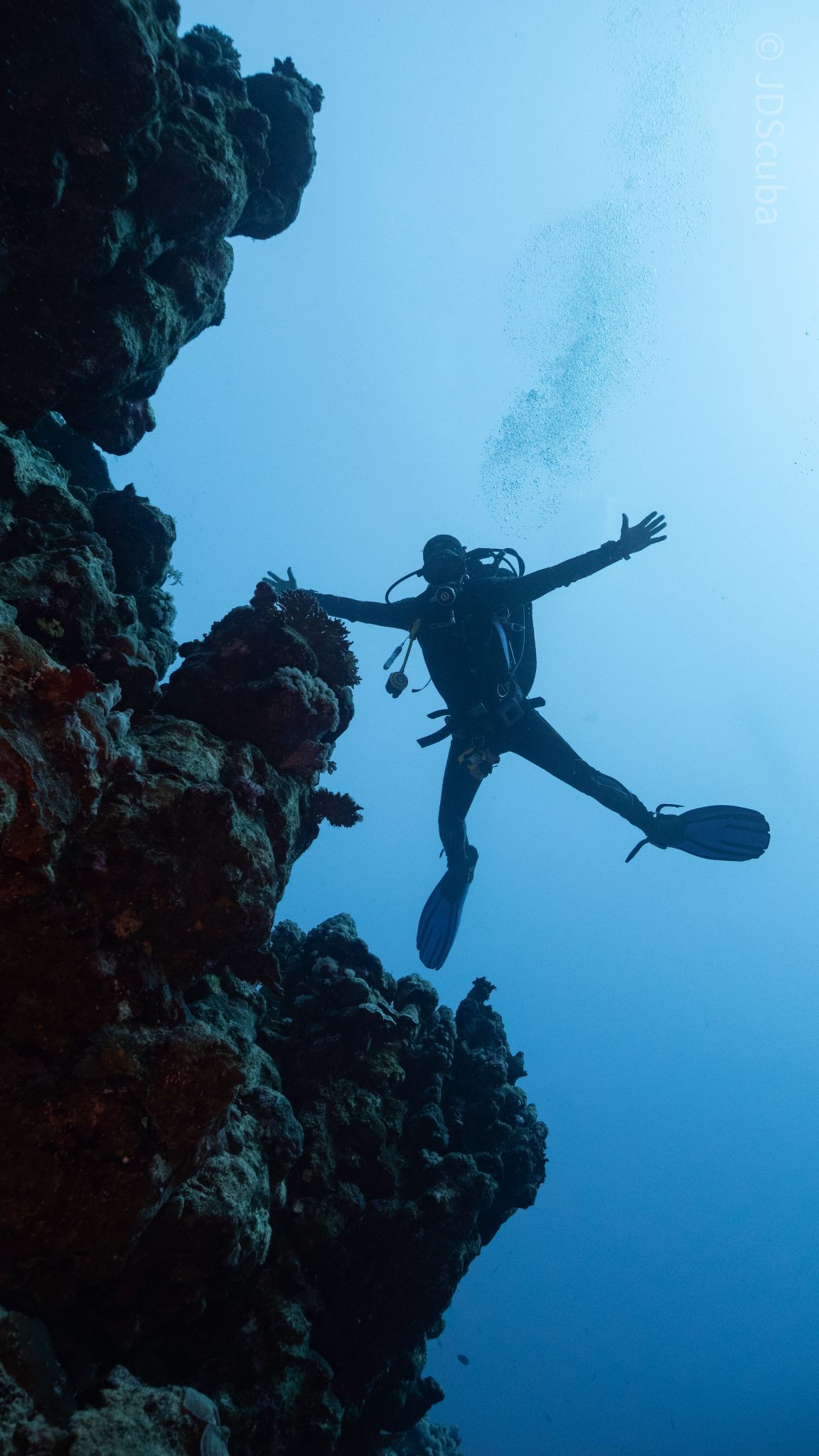
The gentle drift took us along the steep walls of the site, with plenty of anemone fish to be seen and a huge variety of corals. It wasn’t long into the dive before we were accompanied by a hawksbill turtle, who drifted with us between the two atolls before parting ways. Between the two reefs, the shallow patch with parts of coral heads surrounded by sand provided the chance to see a few blue-spotted stingrays that were mainly resting underneath the corals and are always a pleasure to see. With this being the morning dive, the early sunlight lit up the walls, providing tranquil moments. Looking out into the blue, there was very little to be seen, but a small shoal of batfish shimmering underneath the sunlight was a moment to capture as we watched them swim by as they watched us.
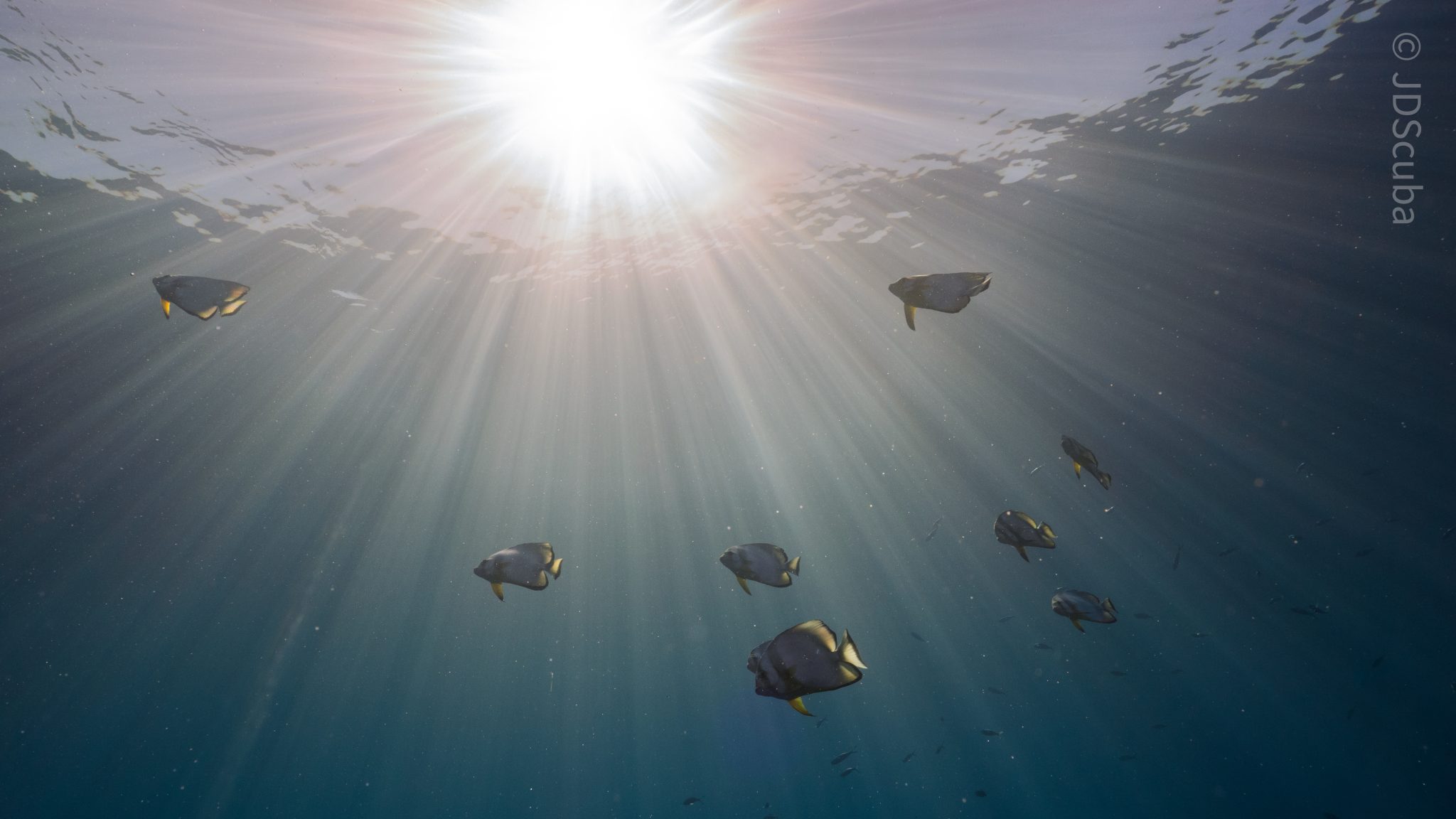
Towards the end of the dive, we stopped at the wreck of the Jolanda where the seafloor was scattered with toilets from the containers it was carrying. This provided a unique site to make a safety stop, which was also accompanied by a large barracuda slowly swimming by, along with a hawksbill turtle calmly swimming over the reef as the sun rays danced in the distance.
For the next dive, we headed north to the Strait of Tiran to explore the reefs situated between Tiran Island and Sharm El Sheik, which were named after the British divers who had found them. We started on Jackson before heading to Gordons Reef, where we also did the night dive. All the atolls at these sites provided stunning, bustling coral reefs close to the surface and steep walls to swim along, which always provided the opportunity to keep an eye out for some of the larger species that can be seen in the blue. Midwater around Jackson Reef was filled with red-toothed triggerfish and shoals of banner fish, which at times were so dense that you couldn’t see into the blue. Moments went by peacefully as we enjoyed the slow drift above the reef, watching these shoals swim around under the mid-afternoon sun.
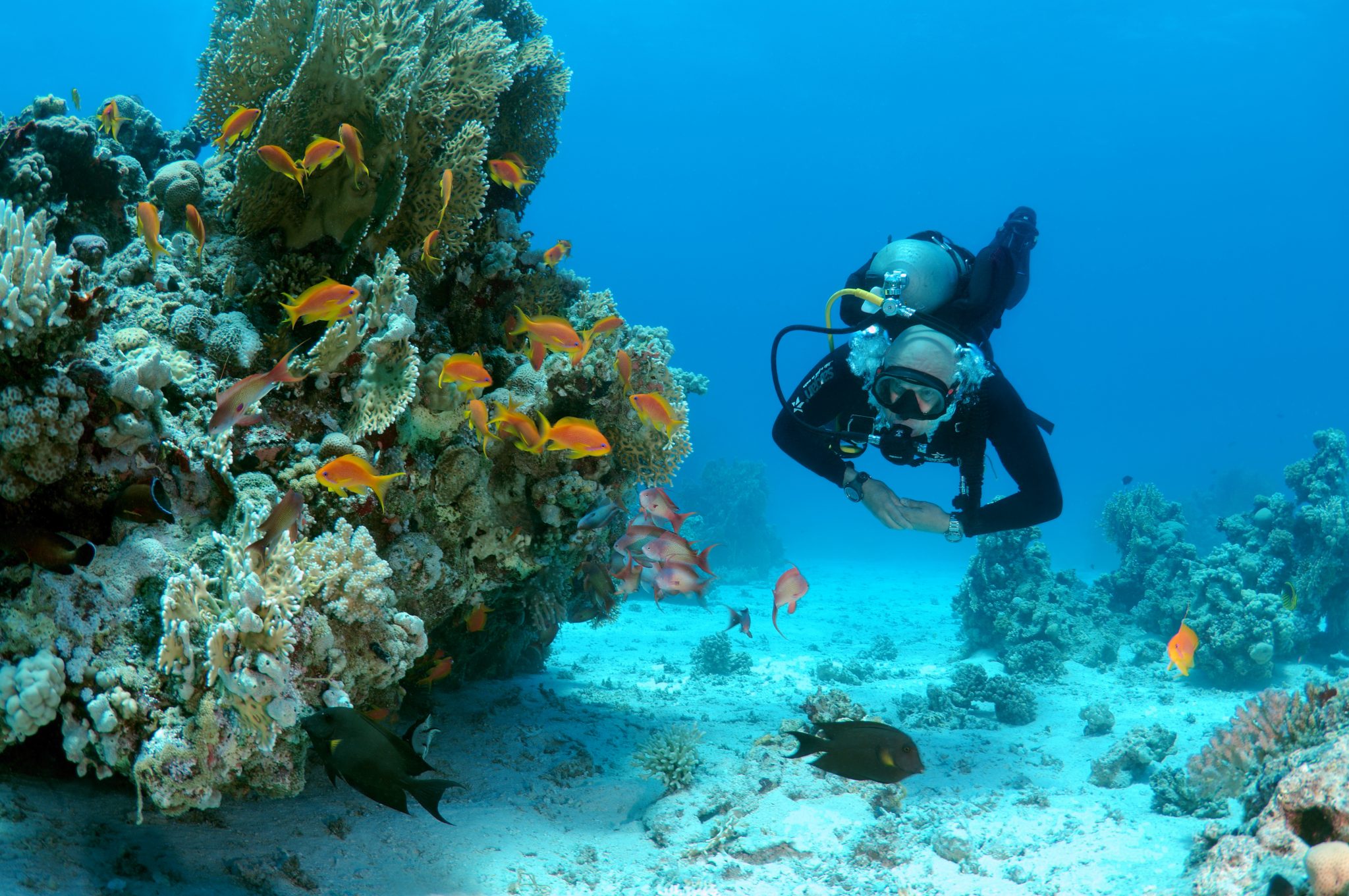
The night dive at Gordon’s Reef was mainly among the stacks of corals surrounded by sand, which was great to explore under the darkness. After some time circling the corals, we came across what we were really hoping to find, and that was an octopus hunting on the reef. We spent the majority of the dive just watching it crawl among the reef, blending into its changing surroundings through changes in colour and skin texture. It’s always so fascinating and captivating to watch these incredibly intelligent animals, in awe of their ability to carry out these physical changes to perfectly blend into the reef. Before we knew it, it was time to head back to the boat to enjoy a well-deserved tasty dinner prepared by the talented chefs onboard.
Check in for the 3rd and final part of this series from Jake tomorrow!
To find out more about the Northern Red Sea reef and wrecks itineraries aboard Ghazala Explorer, or to book, contact Scuba Travel now:
Email: dive@scubatravel.com
Tel: +44 (0)1483 411590
Photos: Jake Davies / Avalon.Red
-
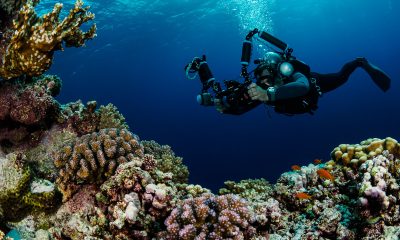
 News3 months ago
News3 months agoHone your underwater photography skills with Alphamarine Photography at Red Sea Diving Safari in March
-
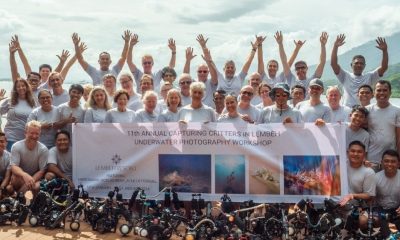
 News3 months ago
News3 months agoCapturing Critters in Lembeh Underwater Photography Workshop 2024: Event Roundup
-
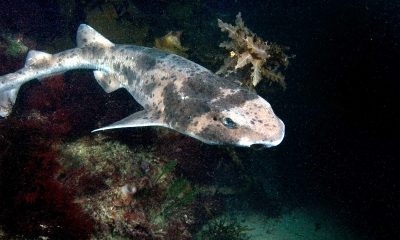
 Marine Life & Conservation Blogs3 months ago
Marine Life & Conservation Blogs3 months agoCreature Feature: Swell Sharks
-
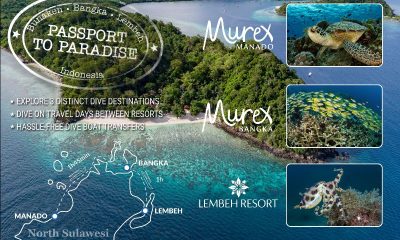
 Blogs2 months ago
Blogs2 months agoMurex Resorts: Passport to Paradise!
-
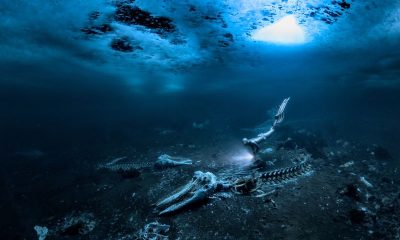
 Blogs2 months ago
Blogs2 months agoDiver Discovering Whale Skeletons Beneath Ice Judged World’s Best Underwater Photograph
-
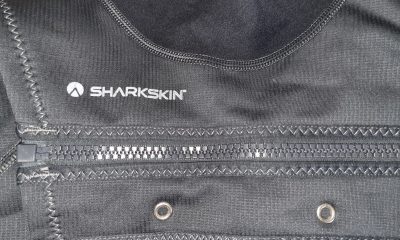
 Gear Reviews2 weeks ago
Gear Reviews2 weeks agoGEAR REVIEW – Revolutionising Diving Comfort: The Sharkskin T2 Chillproof Suit
-
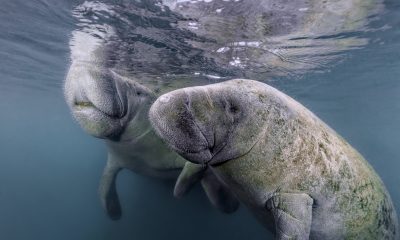
 Marine Life & Conservation2 months ago
Marine Life & Conservation2 months agoSave the Manatee Club launches brand new webcams at Silver Springs State Park, Florida
-
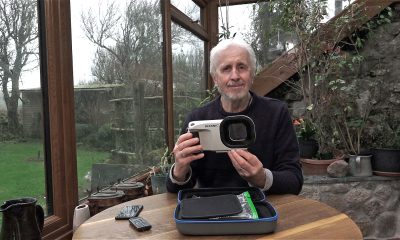
 Gear Reviews3 months ago
Gear Reviews3 months agoGear Review: Oceanic+ Dive Housing for iPhone


